 |
| Mississauga, Ontario-Victoria, MN-Ely, MN-New Ulm, MN-Poniatowski, WI-Mississauga, ON |
This is a GOOGLE MAP showing all the trips in Ontario, Michigan, Wisconsin and Minnesota described in this blog.
 |
| Can you imagine driving ANYWHERE in such a vehicle??? |
Before embarking on this relatively long drive (probably over 4,000 km), I had my car checked by a car mechanic—which was a good idea, because he decided to fix my brakes. It took over 2 hours, which I spent walking along Kipling Avenue, checking out restaurants and coffee shops. At one point I saw a very peculiar vehicle, which I doubted could carry even one person. I took a photo and sent it to Catherine.
“Hi Cathy, since my car requires more comprehensive maintenance, the mechanic provided this replacement car. I just hope that it’ll have enough space for all the stuff I’m bringing to you!”
August 21, 2022, Sunday.
Mississauga—Chutes Provincial Park, Ontario.
 |
| Still River, Ontario |
Since it was Sunday, the drive on Highway 400 was problem-free as I was heading north, as most people were going in the opposite direction, coming from their cottages. I stopped in Still River to take a few photos of an abandoned service center. Catherine and I had stopped there for the first time in 2008; since then it had been gradually deteriorating, as well as more and more abandoned vehicles, boats, cars, buses and other stuff had been dumped around.
It took me over 5 hours to arrive at Chutes Provincial Park—the previous days I had reserved campsite #95 [N46° 13.212' W82° 04.349'], where Catherine and I had stayed for one night in 2013 before driving to Matienda Provincial Park. Since I had a photo of the campsite taken at that time, I was quite surprised to see that many trees were now gone! This campsite was probably the closest one to the Falls, which soothing sound was ever-present. Since there was an informative post and the trail just across from the campsite, quite a few people were passing by and stopping. It was raining a little, but 15 minutes later the rain ended and I quickly set up the tent and went down to the water, where just meters from the chutes found my favourite depression in the rock, shaped like a comfortable chair, where in the past I had spent many an hour reading and enjoying the view & sound of the chutes.
 |
My favourite rock depression! |
In 2017 Catherine and I had camped twice on campsite #98, extending our stay by well over one week as suddenly the autumn weather became summer-like, even causing mosquitoes and black flies to appear! And 3 years ago, in 2019, I camped twice in this park, while going to and from the USA.
I also took a photo of a orange leaf covered with raindrops. Then I wrote a letter to my friend from Poland, Maria Mączyńska (a former Polish archer, who won the world championships in 1967, both individually and in a team competition, and finished in sixth place at the 1972 Summer Olympics, and who was also a Polish and European champion in archery) and inserted the leaf into the envelope.
 |
| If there is a will, there is a way! I wished I could have talked to the owners of this vehicle, as I would not mind eventually traveling like that |
August 22, 2022, Monday.
Chutes Provincial Park—AuTrain Campground, Michigan.
 |
| AuTrain Lake Campground, Michigan |
After packing up, I left the park and stopped in Blind River, hoping to get a snack at the KFC (Kentucky Fried Chicken) restaurant, but apparently it had been gone for a while. A few hours later I reached Sault Ste Marie, Ontario and after driving on the amazing bridge—no traffic this time—arrived at the US border. The US customs officer asked me a few perfunctory questions and kindly let me into the United States of America. I immediately drove to the nearby gas station and then to the Michigan Welcome Center, where I picked up a few maps and spoke to its employee. There was an American lady outside, fiddling with her cell phone—she was trying to download the Arrive Can app and then complete it, as she could not get to Canada without this app. We spoke a little about camping & canoeing in Ontario and I gave her the link to my blogs, which contained very detailed descriptions of many lakes and rivers suitable for this kind of activity.
 |
| View from the observation platform at AuTrain Lake Campground |
The speed limit on Highway M-28 was 75 miles per hour (120 km/h), later 65 m/hr, higher than that in Ontario (although recently it was increased from 100 to 110 km/h on some stretches of Highway 400). There were very few cars and I enjoyed driving on this road—I had to constantly control myself not to exceed the speed limit. Before the town of Munising, there was construction, causing considerable delays. In Munising, I went to the supermarket, got some salad and drove to AuTrain Lake Campground in the Hiawatha National Forest. Of course, I relied on my GPS to take me there, but when at one point it told me to turn into a very narrow, one-lane unpaved road in the middle of a very dense forest (County Road nr 531), I became extremely skeptical about its reliability. After driving for about 50 meters, I backed up to the main road, not wanting to get stuck, as this 'road' resembled a trail suitable for ATVs (All Terrain Vehicles) or mountain bikes rather than cars! Fortunately, my GPS quickly found another road, this time paved, and in no time I arrived at Au Train Lake Campground.
There was a board, listing available campsites and I was surprised that not too many were vacant. I picked campsite 26 [N46° 23.666' W86° 50.210'], close to the water, set up the tent, filled out the payment envelope and deposited it, along with $22 (Catherine would have paid only $11!), to the payment box. There was a short trail with a boardwalk to the observation platform, which offered a great view of the whole lake. Walking back to the campsite, I passed by the host's site: there was a bunch of sticks near a tree and a sign, “Dog Library. Take a stick, leave a stick.”
This was my third visit to this campground—Catherine and I 'discovered' it in 2017, then I stayed for one night in September, 2019 and perhaps I will also camp here on my way back to Canada.
August 23, 2022, Tuesday
AuTrain Lake Campground, Michigan—Armstrong Creek—Ada Lake Campground, Wisconsin
 |
| Armstrong Creek, Wisconsin. Polish Church |
I never like taking down and packing up my tent in the rain, but since the rain seemed to be quite steady, I had no choice but quickly do so and threw the wet tent & the tarp, aka footprint, into the car. I stopped in the town of Escanaba, on Little Bay de Noc on Lake Michigan and went to Walmart. I also found out that Walmart stores offered free Wi-Fi; since my Canadian cell phone did not work in the USA, the only time I could communicate using e-mails, What's Up or Skype was when Wi-Fi was available. Almost all the stores and restaurants that I visited were desperately trying to find employees and some were visibly understaffed. Nevertheless, all employees were very nice, polite and extremely helpful, more so than those in Canada—something I had noticed many years ago.
 |
| Polish-sounding road names |
From Escanaba, I took Highway 41 and had lunch in Veterans Park in Powers/Spalding. There was Veterans Memorial Park Campground for just $10 per night [N45° 41.963' W87° 31.719']. Then I drove south and turned west in Carney on road G18, entered Wisconsin, took a short break in Beecher and then drove on road number 8. I had driven on the same road 3 years ago, in 2019, albeit in the other direction, and noticed plenty of roads bearing Polish names, as well as a Polish cemetery. This time I decided to spend more time exploring the area around Armstrong Creek, Wisconsin. I turned into Cemetery Road, drove to Pine Hill Cemetery and for over 30 minutes walked there. Approximately 80% of the graves bore Polish names, quite a few of the buried people had served in the Second War, Korea and Vietnam.
 |
Ada Lake Campground |
There was also St. Stanislaus Kostka Church near the intersection of roads 8 and 101, in Armstrong Creek. As I continued driving west, I passed Chitko Road, Janczy Lane, Janczewski Road, Kiszonas Lane, Fatla Road, Wozniak Road, Danielczak Road, Ziolkowski Road and Kadlubek Lane.
 |
| Ada Lake, campsite number 10 |
After passing the town of Laona, I arrived at Ada Lake Campground in the Chequamegon-Nicolet National Forest. I spoke to the campground host, a very nice gentleman, then drove around and picked campsite #10 [N45° 22.136' W88° 43.888'], very close to the lake. I quickly set up the tent, went for a short hike at the campground and around the lake and then admired the sunset.
 |
| From my campsite at Ada Lake campground I could admire the sunset |
By the way, I mostly drove on county roads, surrounded by forests, with very light traffic. On several occasions I saw deer crossing the road—there were always at least 2—as well as I saw a few dead deer along the road, apparently killed by motor vehicles. That was why I never drove at night, as such encounters were more likely to occur then and were more difficult to avoid.
August 24, 2022, Wednesday
Leaving Ada Lake Campground, Wisconsin—arriving in Victoria, Minnesota
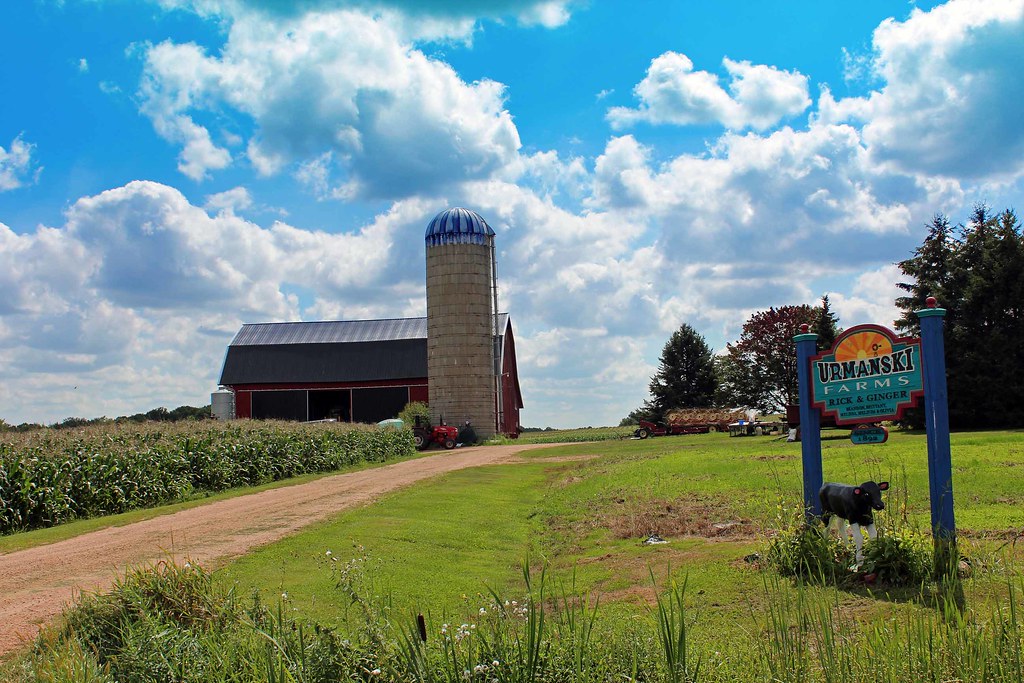 |
| Urmanski Farm near Poniatowski, Wisconsin |
When I woke up, many campers had already left and the campground was very quiet. I headed towards the town of Antigo, where I went to a couple of stores and also bought gas. As I was driving on Highway 29, I decided to check out a settlement called “Poniatowski” [according to Wikipedia, The House of Poniatowski (plural: Poniatowscy) is a prominent Polish family that was part of the nobility of Poland. A member of this family, Stanisław Poniatowski, was elected as King of Poland and reigned from 1764 until his abdication in 1795. Since Polish adjectives have different forms for the genders, Poniatowska is the equivalent name for a female member of this family.].
 |
| Carver Reserve, which almost borders Catherine’s property in Victoria, MN. We spent many hours biking there |
I drove on a number of roads, some having distinct Polish names. One of them, Urmanski Road, led me to a farm; the sign in front had the following inscription: “Urmanski Farms. Rick and Ginger. Brandon, Brittany, Melissa, Melinda & Olivia. Since 1892.” I wish I could speak to the owner, perhaps he could tell me some interesting stories about his ancestors’ coming to the USA and setting up the farm. I also thought about a well-known book by Melchior Wańkowicz, „Three Generations” („Tworzywo” in Polish), that portrayed a Polish family of farmers who arrived in Canada in 1900.
 |
| Aldi—our favourite store not only in Minnesota! Although it has limited selection, we can always find almost everything we need at very reasonable prices |
Since I did not have access to the Internet (and was running out of time), I was unable to find my way to Poniatowski and after a while, I re-rented Highway 29. Later I found out that there was even a Polish church and a pioneer cemetery—and I did visit them on my way back to Canada one month later.
Once I was on Interstate 94, the traffic was getting worse; near and in Minneapolis the highway resembled a parking lot, like it did every day in Toronto. At 6:00 pm I arrived in Victoria, MN and met Catherine, for the first time in 2 years and 7 months!
August 26-September 12, 2022
Victoria—Ely, Minnesota. Camping at various campgrounds in the Superior National Forest.
Two Harbour—Duluth—Victoria
After two days of packing, on August 26, 2022, we embarked on our camping trip. Catherine’s new car, the Honda Pilot, turned out to be much smaller than the spacious Dodge Grand Caravan and we had to be very creative to find space for all the stuff we were taking with us.
 |
| Catherine at Aldi, contemplating what to buy without spending too much money... |
We left in the morning and took Highway I-35, stopped in Forest Lake and bought some groceries at Aldie's (I love this store!) and then spent some time in the small town of Hinckley and went to Grandma's Thrift Shop. There was a sign in the window, saying, “Free Ride in a Sheriff’s Car”; both Catherine and I for a moment thought that the local sheriff offered a free sightseeing ride for tourists and Catherine was almost ready to ask the store owner for more information, yet there was no need, as the second part of the sign was totally self-explanatory: “If you Shoplift from the Store. Compliments of your Sheriff’s Office.” We spent some time in the store, which was very good, and had a good laugh, along the very pleasant owner, when we told him about our initial misunderstanding! And no, we did not get a free ride in a sheriff’s car...
We had lunch at Kettle River rest stop, which had tables and chairs in the forested area. Then we stopped in Tower, MN. The historical marker briefly summarized the town’s history:
TOWER
Named for Charlemagne Tower, one of the developers of the Vermilion Range and Duluth and Iron Range Railroad. It was incorporated as a village in 1884 and as a city in 1889. A saw mill was established here in 1882.
An Indian settlement was located on near-by Lake Vermilion at Pike Bay and trading posts of the North West and American Fur Companies were established then in the 19th century. It was the terminus of the Vermilion Trail built from Duluth in 1865 for the gold rush prospectors pouring into the region. During its construction the first evidences of iron ore were found.
This ore crusher, used in search for gold, was one of the first pieces of mining equipment in the area. It was found underwater in Trout Creek in 1934. The first iron mine in Minnesota was opened near here in Soudan in 1884.
 |
| All aboard, Catherine the steam locomotive engineer is now in charge! |
There was a Tower Station (Tower Passenger Depot), currently a museum, as well as I could admire a real steam locomotive—engine #1218—and even explore the train engineer's cabin. I can only imagine this job, how difficult it was! The nearby inscription provided more information about this impressive artifact:
 |
| I can only imagine how hard it was to work inside the steam locomotive |
WELCOME TO DM & IR ENGINE # 1218.
This steam locomotive was one of 12, received from the Baldwin Locomotive Works in 1910, used by the Duluth, and Iron Range Railway (as number 218) and later by the Duluth, Missabe and Iron Range Railway (as number 1218) to haul rich iron ore from the Soudan Mine to Lake Superior ports. This engine could haul 48 loaded 50 ton cars or 2700 tons. It was donated by the DM&IR to the city of Tower in 1962 for display and historical purposes.
Locomotive 1218: type 2-8-0, standard gauge, 56 cylinders 22"x28", total engine weight 198,850 lbs. Weight on driver 175,050 lbs, boiler pressure 200 psi, driver diameter 54", tractive effort 45,553 lbs. Construction # 34745, Super Heater type A 25 Units, Dome Throttle, Fuel: soft coal, MB type standard stoker, engine loc on locomotive, #8 fire box door. 2 each #10 Nathan Simplex Injectors with side checks. 25-5 1/2 flues 166 2" tubes. DV-3 mechanized lubricator, 4 each. Wilson blowdown valves two feeding blowdown separator on top of boiler, 6 E.T. airbrake equip. with Westinghouse 150 cc air compressor. Barco low water alarm, Walschvert Valvegear, Elco power reverse, Okadee, air operated cylinder cocks, 2 gallon Superior soot blowers, Nathan 3 feed hydrostatic lubricator for stoker and air pump, 2 water glasses and one water column with dry cocks.
In time this locomotive was replaced by heavier and more powerful locomotives. In 2002 the Duluth, Missabe and Iron Range Railway was said to be the largest iron ore handling railroad in North America, with 212 miles of track. Its mission was to move ore from Minnesota's Mesabi Range taconite plants to DM & IR dock facilities at Duluth and Two Harbors, or to connecting railroads at Superior, Wisconsin.
 |
| Kawishiwi River Campground in the Superior National Forest, Campsite #1 |
After altogether driving 305 miles (491 km), we arrived at Kawishiwi River Campground in the Superior National Forest (south-east of Ely, MN) where Catherine had reserved campsite #1 for two nights [47.81582°, -91.73029°]. The campsite—which was the only one available the week before—turned out to be quite nice and certainly looked better than the park-provided image.
As a bonus, it was an electric campsite and Catherine could use one of her many crazy devices, which names and purposes I was not even trying to fathom. And as a double bonus, we had to pay only half of the required fee (i.e., $15.50 per night) due to Catherine’s Golden Lifetime Senior Pass.
In the morning the camp manager, Dan, stopped by in his golf cart to say “hello” and collect the $8.00 for the wood we had grabbed from his campsite upon arrival. The next day we spent close to one hour talking to him and Ellen, the campground host from Florida. They were extremely helpful and congenial people, who enjoyed their jobs.
 |
| Bald Eagles |
Once we drove to the bridge between the Birch River and Birch Lake, brought chairs and spent a few hours just enjoying the view. We met a very nice gentleman, who just arrived and was about to go fishing. He told us a sad story about his daughter who had died in a car accident. While chatting with him, I noticed plenty of birds of prey hovering above—and then I realized (and he confirmed) they were Bald Eagles! Later we saw several of them flying and sitting on tree branches on the other side of the river. It was the first time in my life I saw so many eagles in such a short time!
One of the campsites featured a sizable rock and a huge tree stump. It turned out that just recently this visibly huge tree fell over a camper, while its occupants were there. It was a miracle nobody was killed or injured! I remember a similar accident that occurred in the Warsaw Caves Conservation Area in Ontario, Canada, in 2006. A poplar tree was ripped from its roots and thrown onto a trailer by a big gust of wind that came out of nowhere. A family of 5 was sleeping in the trailer; tragically, a 42 year-old woman was pinned underneath the tree and died instantly.
 |
| Dan (and his dog), a very nice and friendly campground host |
Since we were still looking for a nice campsite for the upcoming week, including the Labour Day long weekend, we approached Dan, who called Tony, the Birch Lake Campground manager, suggesting that we drive over immediately and check out the 3 existing first-come-first-serve campsite. We did and took a quick peek at all 3 available campsites and unanimously decided to grab site number 3 [N47° 45.542' W 91° 46.864']. After registering and talking to Tony, we left plenty of personal items on the campsite and headed back to start packing.
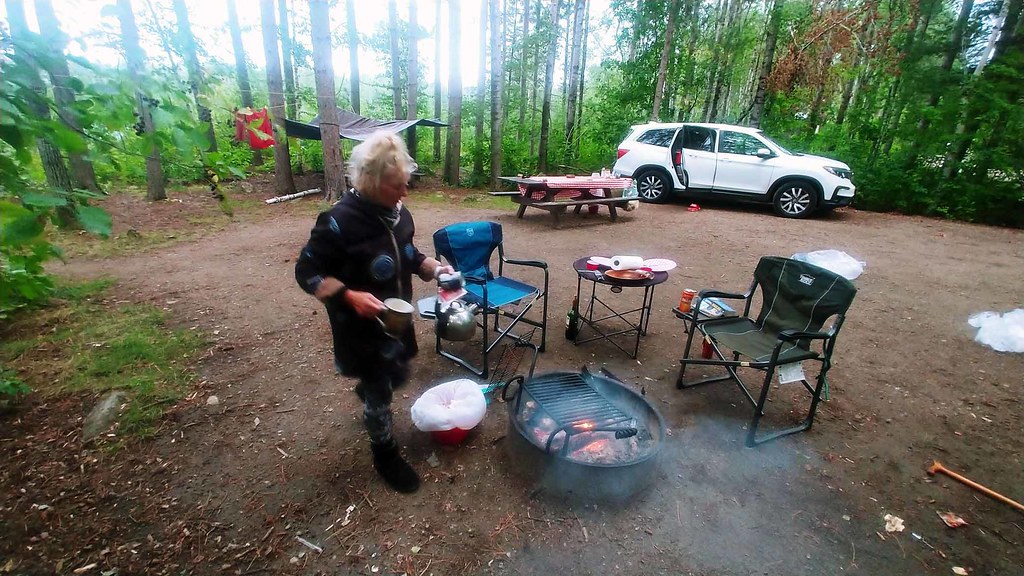 |
| Birch Lake Campground, campsite number 3 |
The campsite was one of the better sites we had stayed on. It was very spacious, private and meters from Birch Lake, on which shores we often sat, enjoying the relaxing view and sunsets. Because the campsite was very large and had two picnic tables, we set up a big tarp over one of them as a rain shelter. Our tent was located over 10 meters from the center of the campsite, close to the lake. Several times we spoke to the campground host, Tony, who used to serve in the US Army and who was also very helpful in us getting the campsite.
 |
| The campground host |
While we did not see any bigger animals (black bears or raccoons), there were plenty of Blue Jays, chipmunks, squirrels and a resident garter snake. Amazingly, mosquitoes hardly bothered us—I never used mosquito spray! We had one rainy and cloudy day, as well as a quick storm rolled over the area once, yet it was hot and humid. There were some edible mushrooms (Chanterelle), which I picked, dried and either ate raw or added to soups—the latter was not a good idea, however. I brought a couple of books with me; one of them, “The Appeal” by John Grisham, was quite good.
 |
| This garter snake must have lived in the vicinity of our campsite, as we saw it quite frequently |
Quite often we would drive to the town of Ely, located just 26 km south of the Canadian border. This small town, with a population of just over 3,000, is the largest "jumping off" town for the Boundary Waters Canoe Area Wilderness and a major one for Quetico Provincial Park. The Boundary Waters Area is renowned as a destination for canoeing and fishing on its many lakes and is the nation's most-visited wilderness. With extensive outfitting and other services, Ely can credibly be claimed to do the most wilderness canoe outfitting of any town or city in the world.
Of course, we visited the renowned Bear Center, https://bear.org/ ($15 per person), where we saw 4 black bears, learned about their history and also learned plenty of interesting facts about black bears. Many of the information on black bears contradicted what I had been reading, especially in Ontario Parks’ tabloids. One of the most interesting myths, which according to the Bear Center was untrue: “When Bears Lose Their Fear of People, They Become More Likely to Attack” The website cites many facts to disprove that and I would like to mention just some of them:
• In a township residents fed bears for years and they lost their fear of people, yet no one was attacked.
• In a sanctuary in Minnesota, for decades people hand-fed and petted hundreds of wild black bears and the public was free to mingle with the wild bears with no rules or supervision: people teased bears with food for pictures, toddlers steadied themselves against 500-pound bears, people lifted children up to bears’ mouths for reasons beyond understanding. There were occasional nips and scratches, but no attacks.
• For decades, people mingled with black bears at garbage dumps where bears had lost their fear of people. In 1989, a researcher asked hundreds of bear biologists at an Int’l Bear Conference if they had ever heard of anyone being attacked at a garbage dump. No one had.
There are plenty of additional examples, as well as several excellent articles on bears: https://bear.org/bear-facts/black-bears/myths-and-misconceptions/.
I would like to add something from my personal experience. I have visited landfills many times, where there were a dozen or even several dozen bears, and I talked to local people and landfill workers. NO ONE has ever mentioned a bear attack on humans. Some even said that they made some kind of connection with the bears and they were almost expecting their arrival. When one of the workers arrived in a different car one day, he immediately noticed the consternation of the bears, who thought someone else had arrived—only when they saw him, did they calm down.
Also many times bears came to our campsites (while camping on Boom Island on the French River in Ontario, we saw 4 bears visiting our campsite) and NEVER showed any sign of aggression. Some quickly ran off into the woods, others kept stalking our food barrels and we had to shoo them away—yet they reappeared in a few minutes. When we left the campsite for a while, we hung the food on the tree, and although the bears tried to get to it, they did not succeed; however, they did a lot of damage, puncturing water containers with their teeth, chewing on paper plates and cups, and making a big fuss. Fortunately, they never entered our tents. That's why many people call bears "overgrown raccoons" (the raccoons are also known for causing a lot of damage and stealing food from camping tourists).
Twice I met relatively small bear cubs, which must have recently separated from their mother. They had two things in common: they were skittish, but also extremely curious. Once, having seen such a bear as it ran across an empty forest road, we stopped and got out of the car. After a dozen or so minutes, we saw it slowly approaching us, watching us all the time. Finally, it came within about 1 meter of me—when I moved my arm, it immediately ran away. The second time, in the state of Georgia, USA, a young bear watched us like a dog for a while at our campsite, fascinated by everything we were doing.
Sows (mother bears) came to our camping site twice—one with a small bear, the other with two very small “toddlers”. And although such a bear can be incredibly aggressive when it feels her cubs are threatened, it normally avoids any confrontation with humans. In our cases, the bears completely ignored our presence.
In 2022, while camping in the Grundy Lake Provincial Park in Ontario, a smallish cub kept coming to camping sites several times per day. One morning it came to our campsite and began to eat my breakfast (while I was enjoying coffee). Although I pounded the table with a stick, honked the car and shouted, the bear completely ignored me and continued its meal. At one point I almost poked it with a stick, but it showed no reaction and was absolutely not aggressive (http://ontario-nature.blogspot.com/2022/11/grundy-lake-provincial-park-ontario.html).
Despite this, I always respect these animals, carefully protect food from them and try to stay as far away from them as possible. And of course, I always carry bear spray with me, which is extremely effective.
The second attraction was visiting the Dorothy Molter Cabin and Museum. Known as the “Root Beer Lady” (1907-1986), she lived for 56 years on Knife Lake (Isle of Pines), northeast of Ely, MN, just south of the Canadian border. She gained national prominence and extensive coverage in media, books and documentaries, and over the years tens of thousands of canoeists stopped by to visit and drink her homemade root beer. Molter first visited her future home (The Isle of Pines Resort) on Knife Lake in 1930 and it became her home in 1934. Until the mid/late 1940s, the Isle of Pines resort was typical of many north woods resorts. It was reachable by seaplanes and motorboats, and later by snowmobiles as they came into use.
After the BWCAW (the Boundary Waters Canoe Area Wilderness) was designated, nearly all motorized transportation to Molter's lodge was eliminated, and residences, buildings, businesses and the few roads from the wilderness were removed, leaving Molter as the only full-time resident in a wilderness area three times the size of Rhode Island. After her death, her cabin was dismantled and moved to Ely. Her residence and a second cabin of hers were reconstructed there, and the Dorothy Molter Museum was established to preserve her legacy. We enjoyed exploring the museum. The more I read about her, the more I admired her and her lifestyle, which must have brought her so much happiness! There were several birch bark pieces that Dorothy used to make notes; in fact, sometimes I also use bark to write letters to my friends!
More information on this amazing lady can be found on the museum’s website: https://www.rootbeerlady.com/dorothy/.
Of course, we also went to the local Thrift Store, which used to be a Goodwill, where Catherine managed to find some goodies, including a nice pair of earrings, and I bought an interesting book.
We took refuge from the weather in the beautiful public library with the newly installed stained glass panels, depicting Ely's history. The library offered free WiFi. During a rain break, we checked a few stores along the main street and drove to a big local supermarket, the ZUP (https://zups.com/), where we ran into and had an interesting chat with one of its family owners, Jim Zupancich.
His wife, Andrea Zupancich, was mayor of the nearby town of Babbit and was running for Minnesota Assembly to be a Republican State Senator (she lost by just 700 votes). He told us the history of his family (4th generation to own Zup’s family grocery, which had been in business for over 100 years), as well as said that the stores were understaffed—a very common problem everywhere. The adjacent “Subway” fast food restaurant posted a note that it was closing at 4:00 pm due to the shortage of employees.
I was quite amazed that for so many years the family kept the original surname, although certainly with “Americanized” pronunciation—I think that the original surname, of most likely Slovenian origin, was “Zupančič”.
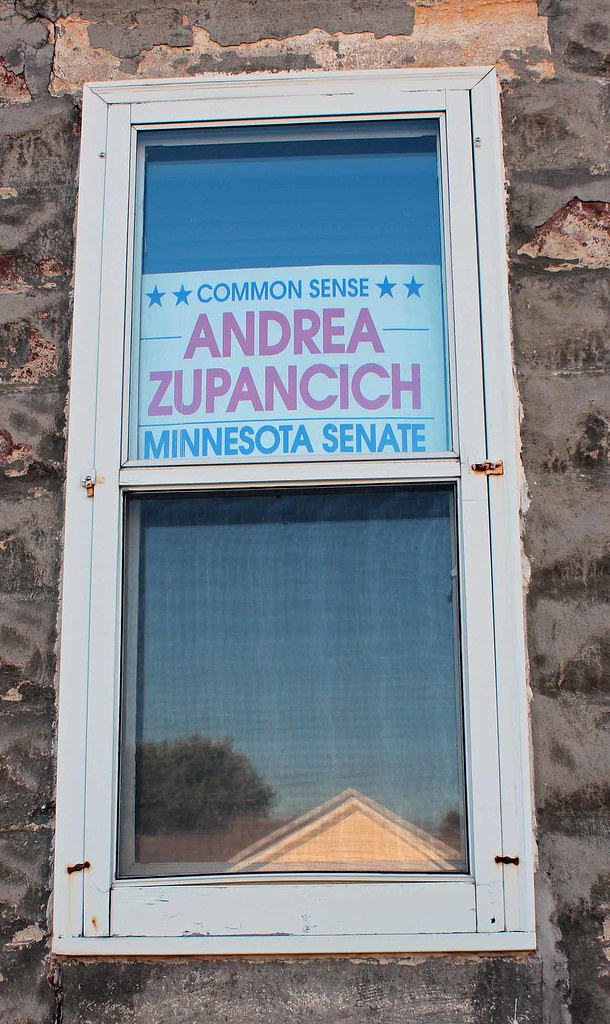 |
| No wonder she lost—very few people nowadays have “Common Sense” |
We visited Zup’s numerous times, as it was probably the only supermarket in town. As always, I talked to many of its employees—I always found them very helpful and courteous. When I took a look at the “General Corporate License” issued by the the City of Ely to Zup’s, I was a little intrigued by the names of two officials who signed this document: Mayor—Robert Skraba and Clerk/Treasurer—Harold R. Langowski! A Liquor Store was adjoining the supermarket, also called Zup’s, where I often shopped. The selection—and prices—were quite different from that in Canada (as was the case in all liquor stores in Minnesota).
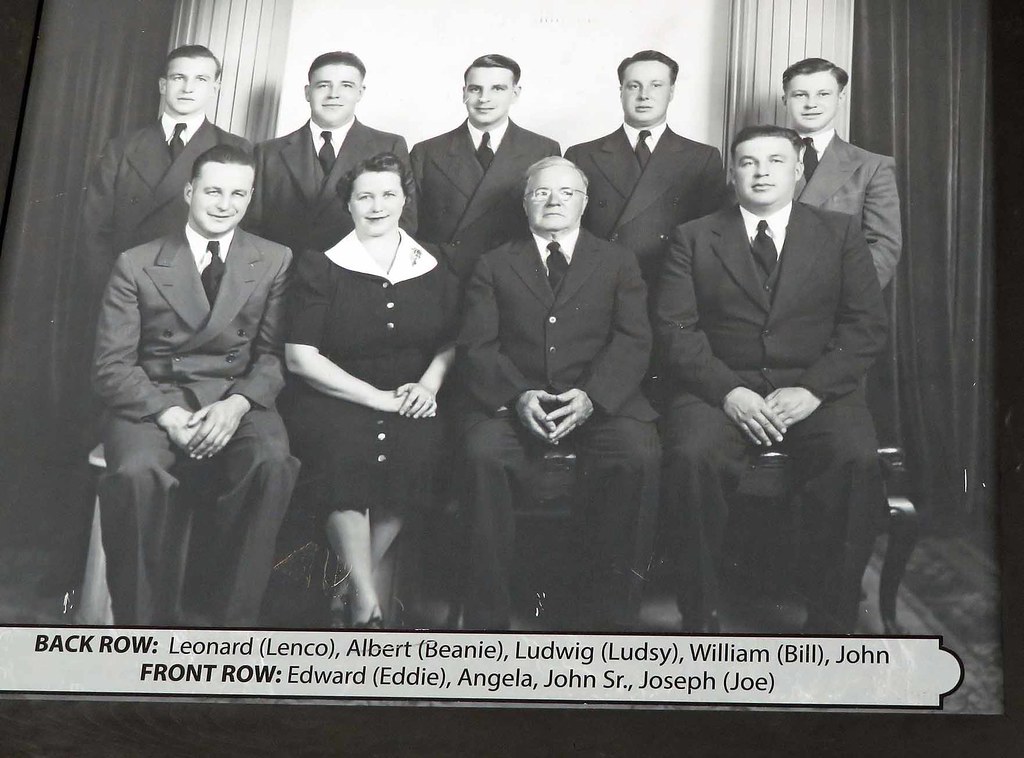 |
| The Zupancich Family |
For one thing, it was very difficult to find the variety of European beers which were so common in liquor stores in Ontario; when I finally did find some, the prices were usually much higher than those in Ontario. However, most alcoholic beverages in Minnesota were cheaper from those in Ontario, especially domestic vodkas, beer or other drinks with a high alcohol content of 12% (e.g., Four Loko). However, I managed to buy a 1.7 l. bottle of 40% vodka for just $10 (less than $14 Canadian). In Ontario, it would cost 65 Canadian dollars By the way, it was in that store that I found out about the death of Queen Elizabeth II on September 08, 2022.
Catherine had read online there was a famous public sauna in Ely, built in 1912, one of the last public baths still open in Minnesota, but only for 3 days a week. She booked a session online. We were a little dismayed when we saw the location and sign out in front. It was old, but clean and worked quite well. We were grateful for the shower which was in the small, private sauna room. The session ($16 per person) lasted for 90 minutes, which was ample. Indeed, I felt so clean and relaxed that I almost wanted to lie down for a while!
Instead, we walked around the town and later drove to the Pillow Rock. According to a description on an old postcard, “An of Greenstone rock is located in Ely. Greenstone is one of the oldest known Minnesota rocks and it is located just a few blocks off Camp Street in Ely, Minnesota. It is called Pillow Rock because of the visible rounded shapes formed within this mass of lava flow”.
Grand Ely Lodge was the top hotel in town. Built in 2006, it has all the hallmarks of a national park lodge and we checked it out, as Catherine was contemplating coming there one day with her mischievous grandkids (or/and kids). Just vis-à-vis the lodge, there was the last remaining structure of the iron mine.
One evening we went to Ely’s Steakhouse Restaurant—which must have been quite popular because we had to wait for over one hour. We decided to go for a stroll. We reached a very peculiar, boarded-up and dilapidated building. It turned out to be Tanner's Hospital, later known as Carpenter's Hospital. Built in 1901, was converted into apartments, which operated from the 1950s to the 1980s. It certainly had very distinct architecture and I hoped that one day it would be restored to its former glory. Locals told us that it was haunted!
 |
The old Tanner hospital |
Several times we visited the local Ely Municipal Airport; there were a couple of small planes parked near the runway, once a small plane took off, but most of the time the place there was only one gentleman, apparently the manager. Most likely other planes were inside huge hangars.
Although we did not see any bears—even though there were warnings posted about bear sightings not long before our arrival—on several occasions we spotted a big garter snake on our campsite—of course, Catherine did not appreciate its company too much. Once she saw it on the path leading to our tent—amazingly, it just started to consume a frog—which it let go of once Catherine interrupted his eating ritual! Another time we observed the snake on our campsite—and there was a smallish bird almost following it! The bird was certainly too small to hunt & eat the snake (if anything, it could be vice-versa) and I wonder if anyone can provide more info on this phenomenon.
 |
| Leaving our wonderful campsite for Fenske Lake Campground—it was really difficult to pack everything into this car! |
On September 5, 2023, we drove to Fenske Lake Campground, talk to Steve, a very nice host, drove around and booked campsite number 13 [47°59'46.84"N 91°54'56.59"W] for the next few days. So, the next day we packed—at one point we thought that we would not be able to stuff everything into the car—but somehow did manage—and drove to Fenske Lake Campground.
The site was excellent: the parking was on the side of the road and to reach the campsite, we had to use multiple stairs (technically, it was a walk-in campsite). It was very spacious, offered a serene view of the lake and was very private—we did not see any other campers, only occasionally we spotted somebody using a pathway meandering close to the campsite. There was a huge tree on the campsite, under which Catherine and I enjoyed sitting and looking at the lake or reading.
There was a small beach and the next day we went swimming. We walked to Steve’s (the host) campsite to pay and buy wood and ended up having a very interesting conversation with him. He showed us inside his motor home, which was almost as big as a regular house; I even asked him if it had a basement! Although the was a warning about bear sightings, we were never bothered by any animals.
 |
OMG, a recent bear sighting warning!!! |
“I don’t know how to do it”, she said.
Of course, the Honda Pilot was loaded with numerous electronic and mechanical gadgets (I had seen the manual online and did not even try to read it) and she had no idea about most of them—yet I expected her to know about the parking break! On the other hand, I was glad she knew where the gas & break pedals and steering wheel were… Luckily, she figured out how to put the brake on. The next day, as we were chatting with Steve, he said that he had to pull cars from our campsite—because they had driven over the cliff!!!
 |
| View from our campsite—just amazing! |
I also met Jesse, a gentleman who was staying in an RV with his wife. Not long ago they had a boat and in 2015 did the America’s Great Loop Route (over 7,500 miles: http://abamadream.blogspot.com/). I wished I had the time to read this blog while in the park and speak with them—but they were leaving the following day anyway.
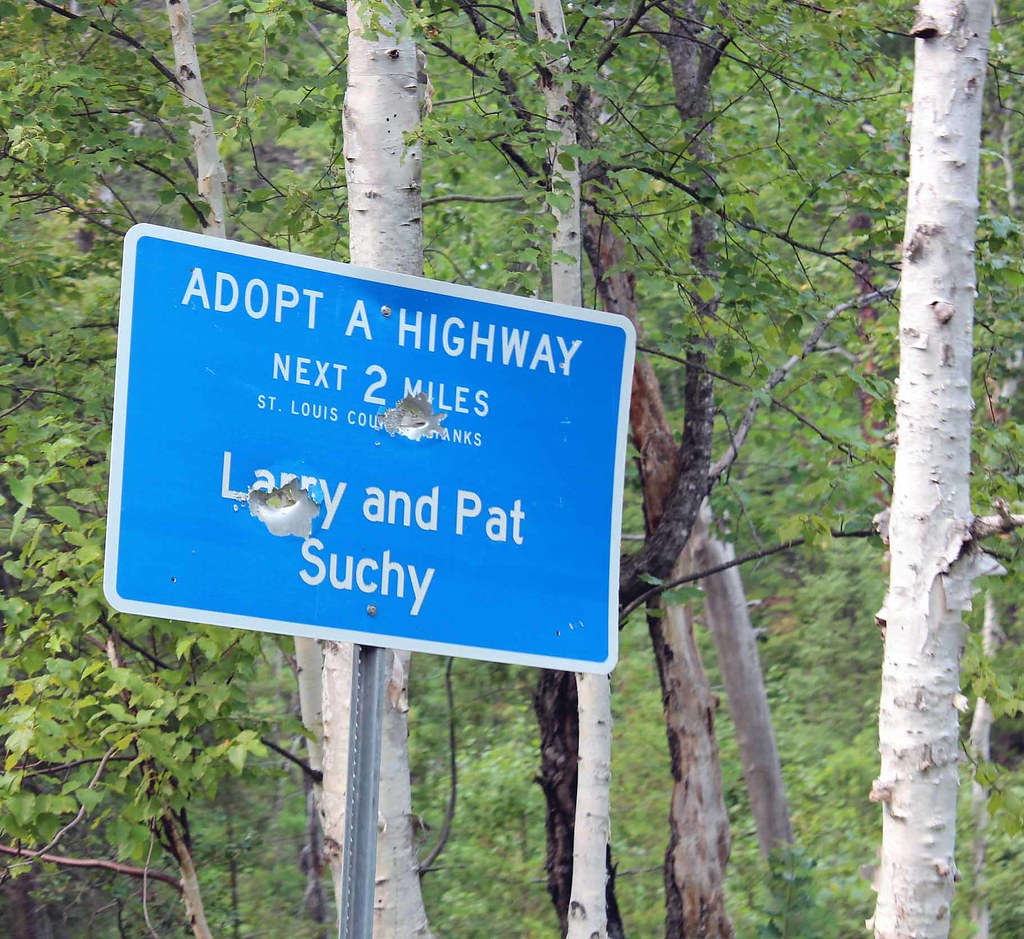 |
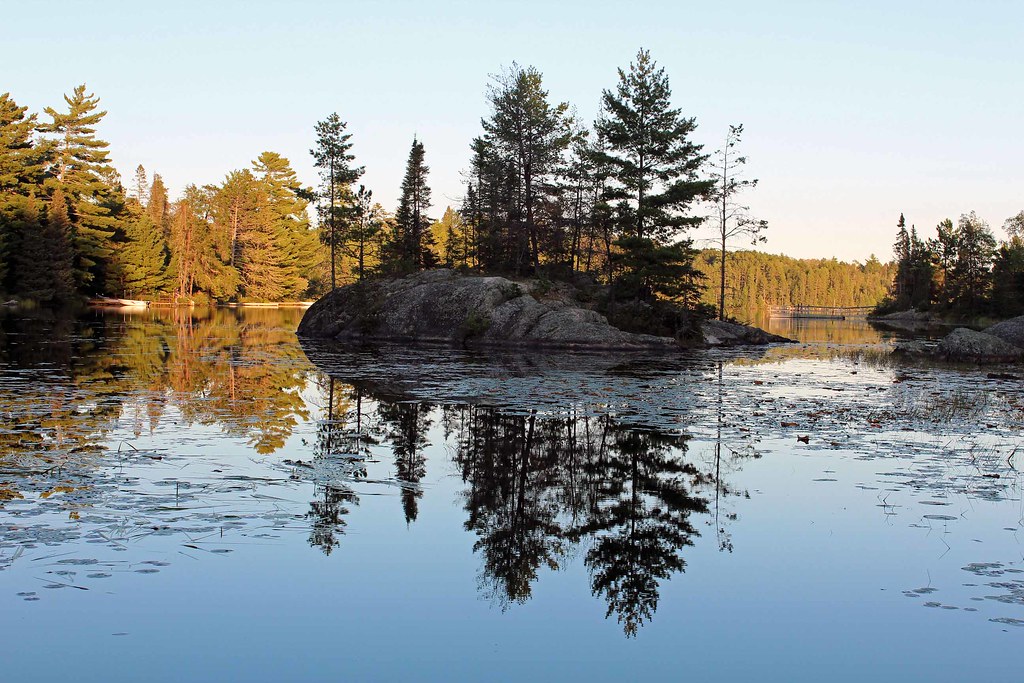 |
| Very close to our campsite at Fenske Lake Campground |
On September 7, 2023, we packed up and left our very scenic campsite and drove to the Sullivan Lake Campground, which had 11 “primitive” campsites—not that we ever needed any additional comfort! All sites were on a first-come, first-serve basis and only 2 were occupied. We decided to pick campsite #4 [N47° 22.788' W91° 40.190'], on Sullivan Lake. It was very private and had a few wooden steps along the shore, where we could sit and admire the lake.
The weather was not that good, yet I quickly set up the tent—as well as the tarp (a very good decision, as we found out later)—and of course, we had a campfire. For 2 nights we paid $34 (no discounts, unfortunately, since it was a state park!).
The next day it rained, so we decided to drive around the area. After a while, we saw, kind of “in the middle of nowhere”, Hugo’s Bar (1898 Hwy 44, Brimson, MN 55602), which was run by very nice people, served great food and most likely was THE place to come to for local people! As a bonus, it offered free Wi-Fi—and I took advantage of it! We had something to eat, talked to several diners, and admired a very eclectic collection of old vinyl records.
Then we kept driving on mostly side roads, in the forest, with no or little traffic. A lot of roads and places had Finnish names because over 100 years ago Finnish immigrants settled in the area. Again, in the middle of nowhere (or rather, a forest), we saw several buildings and a pottery called “Coyote Lake Pottery” [47°11'56.8"N 91°49'29.0"W /
47.199107, -91.824725] (https://www.claycoyote.com). I talked to Bruce and his wife Jaci for a while. He briefed me on the history of this place. Well, it must be truly amazing to live there—although I am afraid that quite difficult in the winter!
Just 5 minutes down the road we stopped at a garage sale. Some of the gizmos were astonishing and probably would make great museum artifacts! Of course, both Catherine and I ended up buying some items, albeit more modern ones. Yet it was not enough—not long after we spotted another garage sale and AGAIN bought some gadgets—as if we did not have enough already!
Just off the road [N 47° 23.977 W 091° 45.365] was the Toimi School, which operated from 1914 until 1942. The Finnish immigrants were very smart people and one of the first things they did after arriving in the USA was set up a school to educate their children! Well, in the long run, it was probably one of the best investments! I wonder if immigrants of other backgrounds did the same thing.
 |
| “Look Jack, there is another Garage Sale… let’s go!” |
Incidentally, during the Soviet Invasion of Finland on November 30, 1939 (called the Winter War, or the First Soviet-Finish War), the Finns bravely fought for over three months. Despite superior military strength, the Soviet Union suffered severe losses. Well, another example that education, preparedness and most likely high IQ DO count!
The historical marker had the following description of the school:
TOIMI SCHOOL
“Drawn by the opportunity to own land, Finnish immigrants homesteaded the Toimi area in the early 1900’s. The Finns placed a high value on education, so their children attended classes in private homes before contractor Justinus Beck constructed Toimi’s first school in 1914.
The handsome one-room school building with hardwood floors, slate blackboards and a library eventually grew to include two classrooms and living quarters for the teacher. Grades one through four met in one room, while grades five through eight met in the other. The settlers took great pride in the schoolhouse, and it became a place for social gatherings.
Until roads were built to accommodate motorized school buses with hired drivers, parents transported the children to school in canvas-covered sleds or wagons. Students carried their lunches made of homemade bread, meat, squeaky cheese or Finnish flat bread in lard pails. Among the students’ most lasting memories is the enticing aroma of food thawing beside the wood stove in the winter.
The Toimi School closed in 1942 because of declining enrollment. Restored to its historical place as a vibrant community, the school continues to reflect the warm memories harbored by the pioneer community who attended classes here.”
At our campsite, we could admire a beautiful sunset! Then we had dinner, spent some time sitting around the campfire and sipping wine and finally went to bed.
When we got up in the morning on September 10, 2022, it was raining, but at least we could savor the mist coming off the lake! The tarp turned out to be very useful—not only were we able to have breakfast there, but also place our stuff on the bench before putting it in the car.
That day was very special to Catherine: on September 10, 2012, her father passed away in Toronto.
Before leaving the area, we stopped at Bassett Town Hall [47°23'13.1"N 91°49'40.8"W
47.386973, -91.828001]. The building was an old school gym—the school itself had burned down years ago. And guess why we stopped there? Yes—there was a yard sale and again, we ended up buying more stuff! Since Catherine had a really difficult time finding any space in the car for the newly acquired goodies, I suggested that she attach them to the roof!
Just off Brimstone Road we saw a quaint church, Bassett Community Church [47.3868674 -91.841838]. The sign said, “Pastor Belle Westman”. Maybe it was coincidence, but one of the ladies at the garage sale in the Bassett Town Hall had a name tag and her name was “Belle”—we wondered if by any chance she was the pastor. A few days later I googled the church and found an article written in 2014 about Pastor John Reppe, who just turned 90 and was still coming to the church to lead religious services. And several months later I found Pastor’s Reppe obituary—lo and behold, he died probably on the day I was reading about him—September 12, 2022, at the age of 98.
Although it was the last day of our journey, we did not go directly home. First, we stopped in Two Harbors, a city on Lake Superior. Just meters from the parking lot was a train station, and train museum, as well as part of the parking was blocked off for an auto show. Even though I had never been a fan of antique cars, I was fascinated by some of the models and spent a lot of time talking to their devoted owners. Probably the most memorable exhibit was the original Ford T—it had been purchased by the current owner’s grandfather and he still had the original ownership certificate! While we were chatting with him, he lit the car’s headlights—using a lighter!
I thought that the railway tracks were no longer used by trains—yet to my surprise, suddenly I saw a passenger train pull into the station! It was one of those scenic train tours, operating between Duluth and Two Harbors. Most of the passengers were Mennonites. The train stopped in town for over two hours, allowing its passengers to do a lot of sightseeing, and then we heard a series of very loud train whistles and soon it left for Duluth.
 |
| “Duluth and Iron Range Railroad Locomotive #3, "The 3 Spot" |
There were several exhibits around the station and I found two of them especially interesting. One was a small locomotive, “Duluth and Iron Range Railroad Locomotive #3, "The 3 Spot". The historical marker contained the following information:
DULUTH AND IRON RANGE RAILROAD LOCOMOTIVE #3
The 3 Spot was built in 1883, by Philadelphia-based Baldwin Locomotive Works. The 3 Spot was originally built for the Tehuantepec Interoceanic Railway in Mexico. The Tehuantepec Interoceanic never took delivery, leaving the locomotive available to the D&IR who was in need of motive power at the time.
Along the Minnesota Frontier
The John S. Wolf and Company of Ottumwa, Iowa, was awarded the contract to build a 68-mile railroad line. The company was charged with laying track from a place on Lake Superior called Agate Bay to an iron ore mine near a town later known as Soudan. The first locomotive purchased by the Duluth and Iron Range Railroad was the No. 3, nicknamed the Three Spot. They paid cash for it in the amount of $9,750.
Perilous Lake Journey
Bringing the Three Spot from Philadelphia to Duluth was relatively easy. The locomotive came to the Lake Superior port on existing railroad lines under its own power. The thirty mile trip from Duluth to Agate Bay, later known as Two Harbors, was a different story. In Duluth, the Three Spot was carefully lashed down to a scow under the direction of the D&IR civil engineer William McGonagle. Towed on a barge by the D&IR’s steam tugboat Ella G. Stone, the vessels left Duluth for the short trip up the shore. Captaining the tugboat was Cornelius O. Flynn.
All was well until a northeaster blew up and threatened to sink the scow and locomotive into the lake. Many a Lake Superior captain in similar conditions would order the tow lines cut so that both boats would not be capsized. In his memoirs, McGonagle attributed their safe arrival in Agate Bay to Flynn’s seamanship and providence. The 3 Spot arrived in Agate Bay on August 29, 1883.
Duluth and Iron Range Railroad Service
The Three Spot was pressed into service shipping men, supplies, rails, and all the necessary equipment from Agate Bay up to the track laying site and served as a construction locomotive for the railroad. The Three Spot was a perfect locomotive for this mission. She was a wood burning engine, able to gather wood and water along the wilderness route. Contrary to popular myth the 3 Spot did not haul the first load of iron ore down from the Vermilion Range. The 3 Spot was simply too light to pull heavy loads of raw ore.
Later Years
In 1899, the Three Spot was sold to the Alger-Smith Logging Company’s Duluth and Northern Minnesota Railroad, headquartered in Knife River for $3000. The renumbered D&NM No. 2 would be used in hauling logs, a task she was suited perfectly for being light enough to negotiate the often lightly built track beds of the logging railroad.
A Homecoming
After being sold several times and nearly lost to scrap the little 2-6-0 was brought home. The Thirty Year Veteran’s Association of the Duluth and Iron Range Railroad Company was allowed to display the Three Spot by the D&IR Depot where it has remained since 1923.
Yet the second locomotive was much more impressive and it was HUGE, one of the most powerful locomotives ever built! Again, let me paste the description of the historical marker:
DULUTH MISSABE & IRON RANGE YELLOWSTONE MALLET #229
DM&IR Yellowstone Mallet #229, which is displayed opposite the venerable Duluth & Iron Range Railroad 3 Spot, was one of eighteen locomotives of this type. They came in two separate contracts of eight locomotives in 1941 and an additional ten locomotives in 1943. All were built by the Baldwin Locomotive Works at their Eddystone plant in Pennsylvania.
World War II was raging and America's iron ore resource was absolutely vital to the war effort for building ships, tanks, and other military equipment. As one might expect, steel for military hardware took precedence over all nonmilitary use of steel. These Mallets however were so important when it came to moving the iron ore that they were assigned the A-1-A preference rating for the materials needed for construction. In other words the Yellowstones were a higher priority than military steel for tanks and ships. It is little wonder that they are often referred to as "The locomotives that defeated Hitler."
#229 was the second locomotive in the second group of Mallets (228-237) that were built in 1943. The 229 was completed and test run on January 5, 1943 and afterward scheduled to depart the Baldwin plant on January 9th. This was mid-winter and the ore season was closed in Minnesota. Rather than going to Duluth or Two Harbors, #229 was sent to Denver, Colorado to be leased to the Denver Rio Grande & Western Railroad until the opening of the next ore shipping season. During that winter 229 pulled long freight trains over the Rocky Mountains and Continental Divide. Other Yellowstone sisters assisted on the Great Northern and Northern Pacific as well as the Denver & Rio Grande Western each year.
When the 229 returned from Colorado in 1943, it was sent directly to Two Harbors to begin working on the Iron Range Division.
Only 72 Yellowstone locomotives were ever built in the U.S. They were operated by the Baltimore and Ohio, Northern Pacific, Southern Pacific, and Duluth Missabe & Iron Range.
The DM&IR Yellowstones were 128 feet long and weighed in at over 400 tons with no coal or water. Filling the tender took 26 tons of coal and 25,000 gallons of water. Altogether the working weight was almost a million pounds. Steam pressure was 240 pounds per square inch creating a tractive effort of 140,000 pounds.
Often compared to the Union Pacific's Big Boy locomotive the DM&IR Mallet's had smaller drive wheels giving them incredible power at slower speeds. The speed limit on the heavy railroad was 45 miles per hour. Yellowstones were capable of pulling trains that would require four diesel locomotives today.
The last Yellowstone Mallet to make a regular ore run was #222 on July 5th, 1960 on the Missabe Division. It was sent to Two Harbors and put on display for a very short time before being swapped for #221. This engone [sic] deteriorated in the weather and was replaced in 1967 by #229, which had been stored in the Proctor roundhouse up until then. In 2011 the #229 underwent a complete cosmetic in an effort to preserve it for future generations.
The 3 Spot and Yellowstone Mallet #229 locomotives represent the first and the last in the evolution of the steam locomotive on Minnesota's Iron Range.
For well over one hour we wandered in town, which had several nice buildings. One of them—actually, it was very ordinary—was the John Dwan Office Building, where 3M Company (originally the Minnesota Mining and Manufacturing Company) was founded in 1902! By the way, since 2020 I have been a co-owner (or rather a shareholder) of this renowned company.
We also spent some time having lunch and resting in a park overlooking the loading docks, lake and the lighthouse. There was a Canadian ship waiting to be loaded (or unloaded), Rt. Hon. Paul J. Martin, a Self Discharging Bulk Carrier that was built in 1973.
Later we drove to Duluth, a very industrial city, where we spent an hour or so on the beach and then drove straight to Catherine’s home in Victoria!
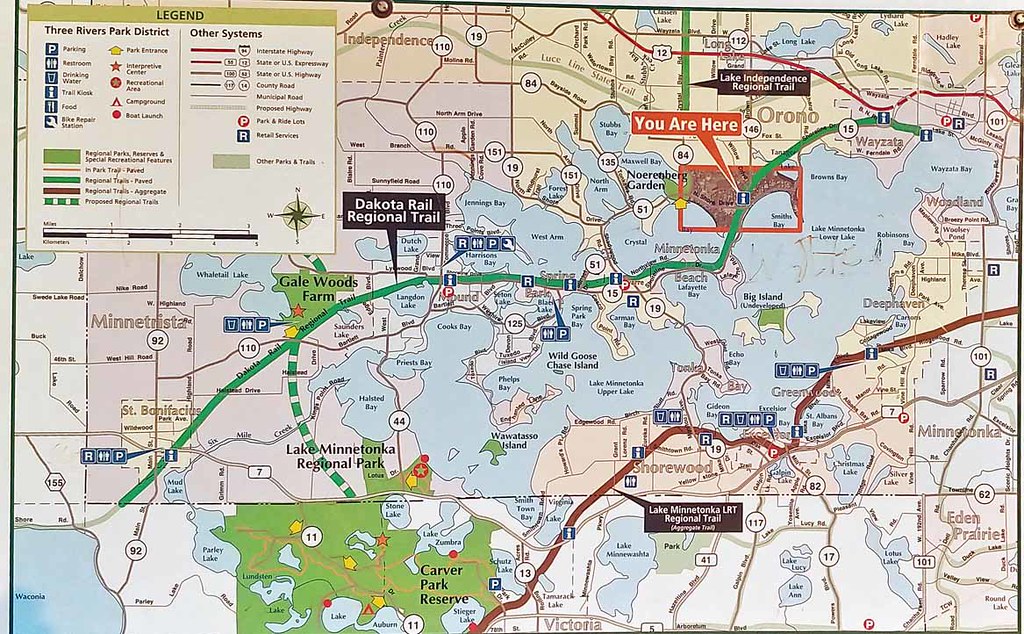 |
| Biking—Dakota Rail Regional Trail |
The next day was quite busy—we had to unload and clean the car, do the laundry, as well as I hand-washed the tent & mattresses and dried them in the backyard.
I spent about 2 weeks in Victoria and also often drove to nearby towns—Chaska, Waconia (which I called “Draconia”), Excelsior, Chanhassen and a few others. On many occasions we rode our bikes on many trails—in fact, one such trail is located just a minute from Catherine’s home. The Lake Minnetonka LRT Regional Trail runs for 15.92 miles (25.62 km) and is on the right-of-way for a rail line originally built by the Minneapolis and St. Louis in the 1890s and abandoned by the Chicago and North Western in 1980, one which branched off the old M.&St.L. main at Hopkins and went out to South Dakota.
 |
| Eagan, MN—Caponi Art Park |
We also enjoyed riding on the Dakota Rail Trail. It runs 28.1 miles (42.6 km) from Wayzata to Lester Prairie, Minnesota. It is on part of the former track bed of the Hutchinson Spur of the Great Northern Railway. The railway line helped bring wheat and raw materials from Central Minnesota to the flour mills, factories and warehouses in Minneapolis from 1885 until 2001. The railway line, from which there are views of the countryside, was also designed to bring tourists to the communities on Lake Minnetonka in the late 1880s. In the city of Mound, we saw the old Tonka Factory (maker of the Tonka Truck and similar toys), with old side-tracks still visible. Also, the Andrews Sisters singing group—Patty, Maxene and LaVerne—spent summers in Mound as children from 1918 through 1931 and returned to visit at least one week each July. They visited their uncles Pete and Ed Sollie at their small grocery store, often visited the Mound Casino, and relaxed at the Mound swimming beach, reminiscing about their childhood.
I drove several times to Chaska. The local Dollar Tree Store was closed one or two days per week due to the shortage of employees. In Chaska, I met a very pleasant lady and had a long conversation with her. She told me that Minneapolis was very unsafe and that recently a gang was stealing people’s cell phones and then withdrawing tens of thousands of dollars from their bank accounts (her story was later confirmed by a newspaper article—apparently, the police caught the culprits), that Chaska was not that safe either (I think she was the third person to tell me so). Since she was into canoeing, sailing and camping, I suggested that she visit Ontario, especially Killarney and French River Provincial Parks, which are excellent for canoeing. Of course, I gave her my calling card with the links to the blogs and photos.
In another park, we spoke for a while with a very nice, young deputy sheriff and he told us about his job and the issues he had to mostly deal with.
We also went to the city of New Ulm, founded in 1854 by the German Land Company of Chicago. The city was named after the city of Neu-Ulm in the state of Bavaria in southern Germany. We toured the August Schell Brewing Company, the second oldest family-owned brewery in America which in 2010 celebrated its 150th Anniversary. The tour included a tasting of various beers—I like the IPA the most.
In the Dakota War of 1862, the city was attacked twice by a Mdewakanton force from the Dakota reservation on the Minnesota River to the west. The townspeople erected barricades in the center of the settlement. Together with volunteer militia from other towns they beat back both attacks. However, most of the town outside the barricades was burned and the majority of people evacuated to Mankato.
The city still has a very visible German character and we spent a lot of time just walking up and down the main street, taking photos and talking to people. We stopped in Schonlau Park, where the Glockenspiel bell tower stood (one of the world's few free-standing carillon clock towers) and at 6:00 pm were entertained by a very interesting and entertaining performance—as the bells chimed, the figurines danced to the chimes.
As we were driving around the city and admiring many historical buildings and other landmarks, it was slowly getting dark. Yet suddenly I noticed a very impressive monument; even though I had not read about it before our visit, I immediately knew that it depicted Arminius (German: Hermann), an ancient Cheruscan (it was called the Hermann Heights Monument). We drove to the parking lot and I walked to the monument, but it was too late to climb the spiral staircase to an observation platform.
But what caused me to immediately recognize the monument? The story is a little long, but, in my opinion, worth recounting.
Hermann Heights Monument, Jürgen Stroop and Kazimierz Moczarski
In the 1970s in Warsaw, Poland, I was very lucky to buy a newly published book “Conversations with an Executioner” (Rozmowy z katem) by Kazimierz Moczarski. The author used to be an officer of the Polish Home Army, very active in the anti-Nazi resistance during World War II. After the war, in 1945, he was captured and imprisoned in a maximum-security prison by the notorious Polish secret police under Stalinism. For a time, he shared the same cell with the Nazi war criminal Jürgen Stroop, who was soon to be executed.
It was extremely tragic and humiliating to put Moczarski in the same cell with a leading Nazi murderer—after all, Moczarski was fighting AGAINST the Nazis. But during that time the communists did not care: Józef Rożanski (born Josef Goldberg), Colonel in the Polish Ministry of Public Security (UB), a communist secret police, personally assured Moczarski, “We can always prove with documents that you were a Gestapo agent. We are in possession of appropriate blank forms, seals, etc., and moreover we have in our hands former Gestapo men who will sign that you were a Gestapo agent.”
Moczarski and Stroop engaged in a series of conversations. The book is a retelling of those interviews. SS-Gruppenführer (major general) Jürgen Stroop was responsible, among other war crimes and atrocities, for the suppression of the Warsaw Ghetto Uprising in 1943 and wrote the infamous Stroop Report for the SS chief Heinrich Himmler, recounting the German suppression of the Warsaw Ghetto Uprising and the liquidation of the ghetto.
After the war, Stroop was prosecuted during the Dachau Trials and convicted of murdering nine U.S. prisoners of war. Then he was extradited to Poland. While awaiting trial in Warsaw's Mokotów Prison, Stroop spent 255 days in a cell with Kazimierz Moczarski. By the time they met, Moczarski had been incarcerated for more than three years after communist judges sentenced him on 18 January 1946.
During their incarceration, Stroop opened-up in detail about his life. He also shared with Moczarski his letters from his mother, wife, and children in West Germany.
Stroop's trial began on 18 July 1951 at the Warsaw Criminal District Court and lasted three days. On 23 July 1951, the Court sentenced Stroop to death by hanging. Stroop was hanged at Mokotów Prison at seven o'clock in the evening on 6 March 1952.
 |
| Stroop before a Polish court in 1951 |
Moczarski collected notes and wrote a memoir about his 255-day incarceration from 2 March 1949 until 11 November 1949 in one cell with Jürgen Stroop after his release from prison and rehabilitation in 1956 during the anti-Stalinist Polish October. His first draft was written in secrecy. Fifteen years after his ordeal ended, Moczarski published his memoir in installments in the Polish magazine Odra Monthly in 1972–74. He did not witness the publication of his work in book form. The first shortened book version was released in 1977, two years after Moczarski's death. The full text without communist censorship was published in 1992 after the collapse of the Soviet Union, by Polish Scientific Publishers PWN. Moczarski died on 27 September 1975 in Warsaw, weakened by the years of physical torture endured during his communist 'interrogations' by the UB secret police.
Stroop was born in the Principality of Lippe. As Moczarski wrote in his book, “Both of his parents were enthusiastic monarchists. During parades in Detmold, Stroop’s father often pointed out Leopold IV, Prince of Lippe and said, ‘Remember this always. This is our Prince. Obey him and serve him as I have.’ Young Josef's sense of German patriotism was fostered by growing up in the shadow of the Hermannsdenkmal.”
 |
| Hermannsdenkmal ("Hermann Monument") in the Teutoburger Wald (Teutoburg Forest), Germany (source: Wikipedia) |
Yes, the Hermannsdenkmal (German for "Hermann Monument"), which Stroop mentioned in the book, is a monument located southwest of Detmold in the district of Lippe (North Rhine-Westphalia), in Germany. The monument was constructed between 1838 and 1875 to commemorate the Cherusci war chief Arminius (in German, Hermann) and his victory over Rome at the Battle of the Teutoburg Forest in 9 AD. When the statue was built, its location was believed to be near the original battle site, although experts now consider it more likely that the battle took place near Kalkriese, about 100 km to the northwest.
Of course, the Herman Monument in New Ulm, Minnesota, was quite similar to that original monument—and although I do not recall ever seeing a depiction of the German monument, for some reasons I just knew what the monument in New Ulm represented!
- The aforementioned information is from Wikipedia and other source :
- https://en.wikipedia.org/wiki/Hermannsdenkmal
- https://en.wikipedia.org/wiki/J%C3%Bcrgen_Stroop#cite_ref-5
- https://en.wikipedia.org/wiki/Hermann_Heights_Monument
- https://en.wikipedia.org/wiki/New_Ulm,_Minnesota https://en.wikipedia.org/wiki/Kazimierz_Moczarsk
- https://en.wikipedia.org/wiki/Conversations_with_an_Executioner
- http://cejsh.icm.edu.pl/cejsh/element/bwmeta1.element.desklight-4fc386ce-1502-421c-aa39-e47173d63e9d/c/Romanowska_Elzbieta.pdf
I had said many times to Catherine that she lived in paradise! Indeed, even though the city of Victoria is relatively close to St. Paul-Minneapolis, it is still far enough to avoid most of the problems so familiar in most bigger agglomerations. Just a few kilometers from her home is the Minnesota Arboretum—an amazing place! The following information are from its website, https://arb.umn.edu/about/about-us:
Founded in 1958, the Minnesota Landscape Arboretum is a 1,200-acre public garden in Chaska, Minnesota, that attracts more than 500,000 visitors per year. Best known for its beautiful display gardens, nationally recognized tree collections, protected natural areas and research activity, the Arboretum is easy to explore via paved paths, such Three-Mile Walk and Three-Mile Drive, which are open year-round. Many miles of wooded trails, stone pathways and routes for cross-country skiers and snowshoers provide access to the healing power of nature in all seasons.
The Arboretum has grown dramatically over the years to include 28 specialty gardens, 44 plant collections, more than 150 permanent works of art, 200 staff members and a stunning array of 5,900 unique species, cultivars and hybrids.
As part of its mission, the Arboretum offers educational classes — in person and online — for more than 20,000 adults and children every year. A dedicated learning center on Arboretum grounds — and outreach to area schools — provides children with fun, hands-on, K-6 science standards-based school programs that use plants and nature as inspiration. Popular online programming and outreach programs spread the Arboretum’s reach across the state among all ages.
Luckily, Catherine was a member of the Arboretum, and her membership allowed her to bring several guests! So we visited it many times, including on bikes and to attend an outdoor yoga class (Yoga in the Gardens) and Family Fun at the Farm (the last event along with Catherine’s daughter, son-in-law and two grandkids, Autumn and Everett). We had an opportunity to talk to REAL farmers about various plants, farm work, harvesting and other topics about farming. It is a wonderful place for everyone—and for those particularly interested in learning about various plants and trees, it might be the only organization to belong to!
Finally, on September 25, 2022, I said goodbye to Catherine and left Victoria, expecting to spend at least two nights camping in the USA and one in Canada. This time I took my bike with me (I had left it at her house in September, 2019, hoping to get it back the following May). I had bought an Allen Sports Deluxe 2-Bike Trunk Mount Rack, which did not require any permanent contraptions or modifications to my car. I was a little afraid that the bike might get loose and fall off, so I secured it with two additional straps, attached to the roof rack. Yet it worked perfectly and I never had any problems whatsoever! The only potential issue with this kind of rack is that the bike is not secured to the car and it would be easy to quickly cut the straps and steal it. Yet I protected it further with a bike lock.
First things first! I took Highway 29 and headed to the tiny community of Poniatowski, Wisconsin, which I had not been able to find over one month ago. This time I had entered all relevant information into my GPS, which led me straight there! There was a Holy Family Church, established in 1877. The pastor was Rev. Alan Wierzba (meaning “Willow”) and masses were celebrated on Saturday and Sunday. There was an adjacent cemetery that I intended to explore, yet it started raining and I just had enough time to take a few photographs.
The community of Poniatowski is also—or I would say, especially—known for its unique location: namely, the 45×90 points are the four points on Earth which are both halfway between the geographical poles and the equator, and halfway between the Prime Meridian and the 180th meridian. Both northern 45×90 points are located on land, while both southern 45×90 points are in remote open ocean locations.
The best-known and most frequently visited such point is 45°0′0″N 90°0′0″W, which is 410 m (1,345 ft) above sea level near the unincorporated community of Poniatowski in Wisconsin. No wonder—the other such point, located on land [45°00'00"N 90°00'00"E] is in China, in a very remote and inhospitable area.
I drove to a parking lot and then, despite light rain, proceeded on a path leading to the exact center of the Northern Hemisphere where the 45th Parallel of Latitude intersects the 90th Meridian of Longitude.
After a 10-minute walk, I arrived at that “famous” place [45°00'00"N 90°00'00"W]. There it was—a bronze plaque, stating: “Marathon County, Wisconsin. 45° North Latitude, 90° West Longitude.” I stood at the very spot, kind of expecting to be sucked into the ground (as I had seen happening in some movies), but nothing happened!
There were several information plaques and one of them was about John Gesicki”
JOHN GESICKI
John Gesicki was a lifelong Poniatowski resident who owned and operated Gesicki’s Store and Tavern and Moonlight Gardens in Poniatowski for over 50 years. He is credited with promoting the significance of the geographic 45-90 latitude and longitude point, which is the exact center of the Northwest Hemisphere.
In 1969, Marathon County erected a marker and made the area a county park—the smallest in the state. Mr. Gesicki then started the 45x90 Club, which gathered thousands of visitors’ signatures from around the world, putting the community of Poniatowski on the official state map.
I decided to spend the night in the Ottawa National Forest, at Marion Campground. There were a few loops… and as far as I remember, I did not see any other campers, all campsites were vacant! Since I was planning to spend only one night there, it did not matter what kind of campsite I got—eventually, I picked site number 15 (N46° 16.017' W89° 05.100'), with a lake-view (not that it made a difference!) It was raining and I reluctantly set up the tent as quickly as possible, then spent some time in the car reading something and finally sneaked into the tent and quickly fell asleep. Just in case I had 2 cans of bear spray with me, but nothing disturbed me.
The next day, September 26, 2023, I left the park and not long after stopped in the small town of Bruce Crossing, at the intersection of Highways 45 and 28. There was a gas station and Settler's Co-Op Inc, a universal store that also carried fishing & hunting supplies. Then I drove up to the shores of Lake Superior, on Highway 28. It was very windy and the waves were so high that they resembled those I had seen in Cuba! No wonder Lake Superior could be quite challenging for boaters—especially for canoeists!
I considered spending the night in the Hiawatha National Forest, at Three Lakes Campground, where Catherine and I had enjoyed camping some years ago, yet I decided to try a new campground in the same forest, Soldier Lake.
I drove several times, checking out various campsites—there were very few campers, yet the campsites on the lake were occupied or reserved. I wanted to talk to the hosts (always an excellent source of information), but apparently, they were gone. Eventually, I picked campsite #44 [N46° 20.793' W84° 51.862'], which was in a clearing (at least I did not have to worry about branches falling on my tent, which had happened on several occasions). As I finished setting up the tent, a van full of Mennonites passed by and soon they occupied two campsites near the lake. The cost was $20 and I deposited the money to the self-serve pay station.
The next morning it took me less than one hour to arrive in Sault Ste Marie, Michigan. I parked the car on W. Portage Avenue, just across the entrance to the Soo Locks Visitor Center, which I soon visited. It offered plenty of information on the Soo Locks as well as an observation platform from which it was possible to watch passing ships. As I was there, the MANITOULIN was entering the locks (a Self Discharging Bulk Carrier built in 1991, with carrying capacity of 27550 t, the current draught of 7.8 meters, length of 202 meters and width of 23 meters). Boat tours were also available and I wished I had taken one, but unfortunately, I did not have the time.
Afterwards, I drove on the impressive bridge and entered Canada. The Canadian Customs officer asked me about the length of stay in the USA, the amount of alcohol I was bringing, and the total value of all items I was bringing to Canada. I had made a detailed list of everything—in any case, I was allowed to bring duty-free goods whose value was up to $750; mine were well under $400. Then I drove straight to Chutes Provincial Park—at one point my odometer showed 222,222 km!
Our favourite campsite #98 [N46° 13.251' W82° 04.382'] was available, so I immediately occupied it and after setting up the tent, I went for a walk and later down to the falls, resting in my “armchair” carved in the rock! Finally, I was able to call home, as my cell phone started working in Canada. On one of the campsites, I spotted a very small “teardrop” camper and talked to the couple that was camping in it. Even though it was very small, they praised its many advantages. I would consider buying such a small, minimalist camper, which provided a sleeping area and a small kitchen.
The next day I packed up the tent and biked all over the park for over one hour. When I came back, the “camper couple” was leaving and we chatted again. They were heading to Awenda Provincial Park—which I had never been to—and I seriously contemplated spending the next night there, as it was on my way.
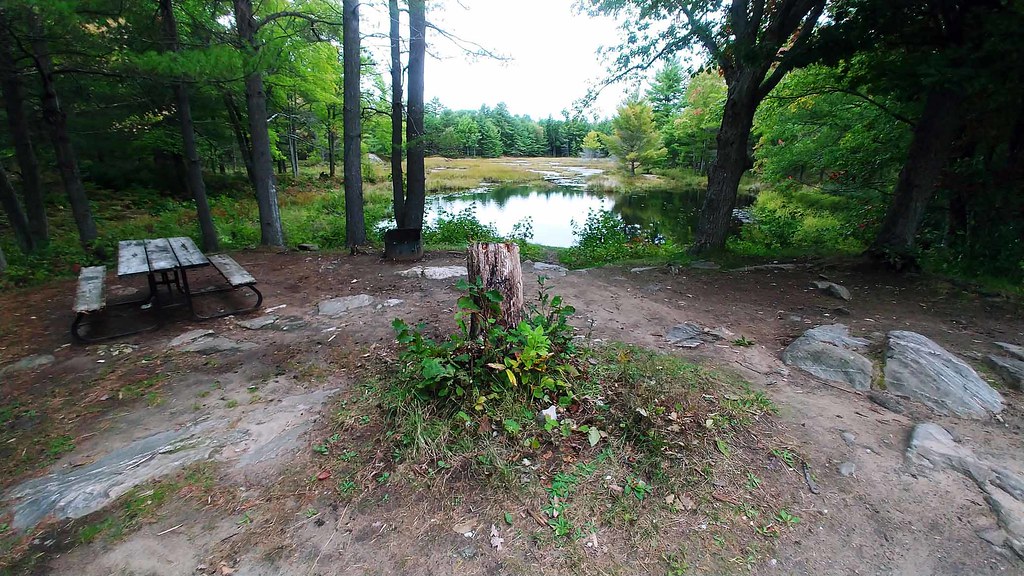 |
| Six Mile Lake Provincial Park, Ontario |
Unfortunately, not long after I passed the Key River bridge, the traffic came to an abrupt halt. I waited for a long time and when finally all the other cars were moving, we had to take a detour: we took Highway 529 and re-entered Highway 400 just north of Pointe au Baril. Most likely I lost over 2 hours due to the construction delay and that was why it was too late for me to go to Awenda Park—I decided to stick with my original plan and went to Six Mile Lake Provincial Park, where I spent 3 nights, as the weather was very good. The first night I spent on our favourite campsite, near the pond—since it was vacant for only 1 night, I had to relocate in the morning to another campsite on the same pond. It was the first time I camped on that campsite, which I had known was very private. Indeed, I was able to sit on the semi-rocky shore of the pond and admire the view in front of me, including a beaver lodge. At night I heard plenty of splashing—with my 1000-lumen flashlight I was quickly able to see a couple of beavers swimming around the lodge.
I also rode my bike several times on the park’s roads as well as on Joe King’s Road and Lake Road. As I was driving to the White’s Falls and Big Chute, I spotted something on the road. I stopped and drove back—there, in the middle of the asphalt road, was a coiled small Eastern Massasauga Rattlesnake, the only venomous snake in Ontario! I took a bunch of photos and then tried to gently relocate it to the side of the road. Initially, it kept charging at me, but as soon as it realized that it could not win, it hastily retreated into the dense vegetation. Later I asked a park warden if there were any rattlesnakes in the park—he said no because of all the tourists, but it was relatively common to encounter them around the park.
On Friday, September 30, 2022, I left the park and drove straight home!



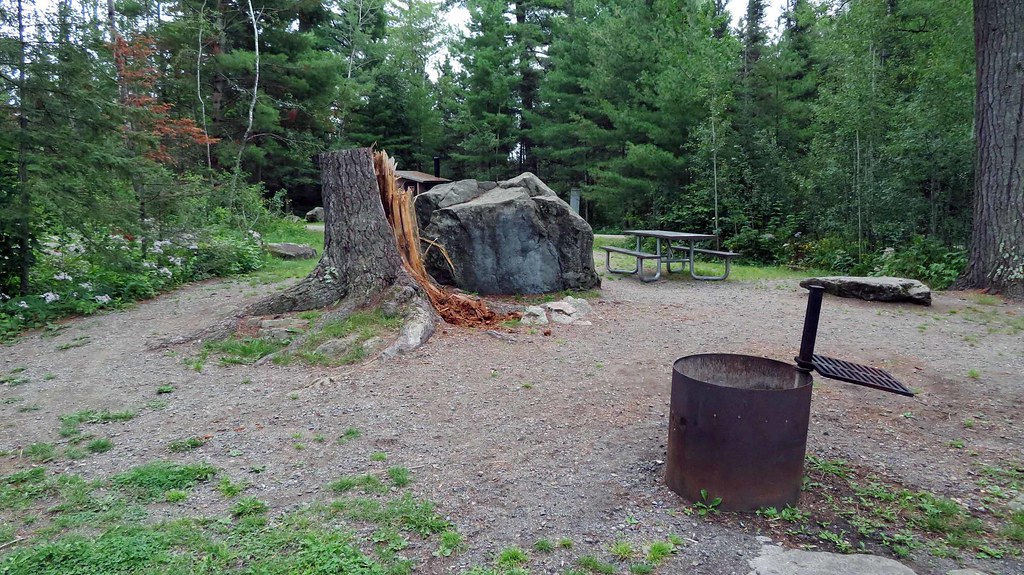
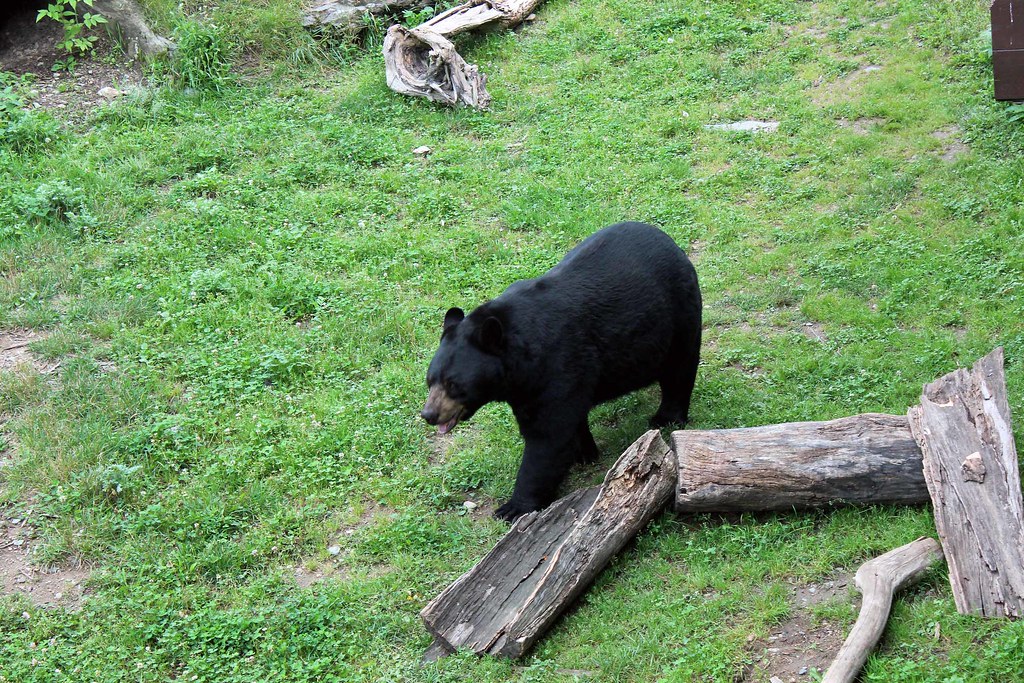


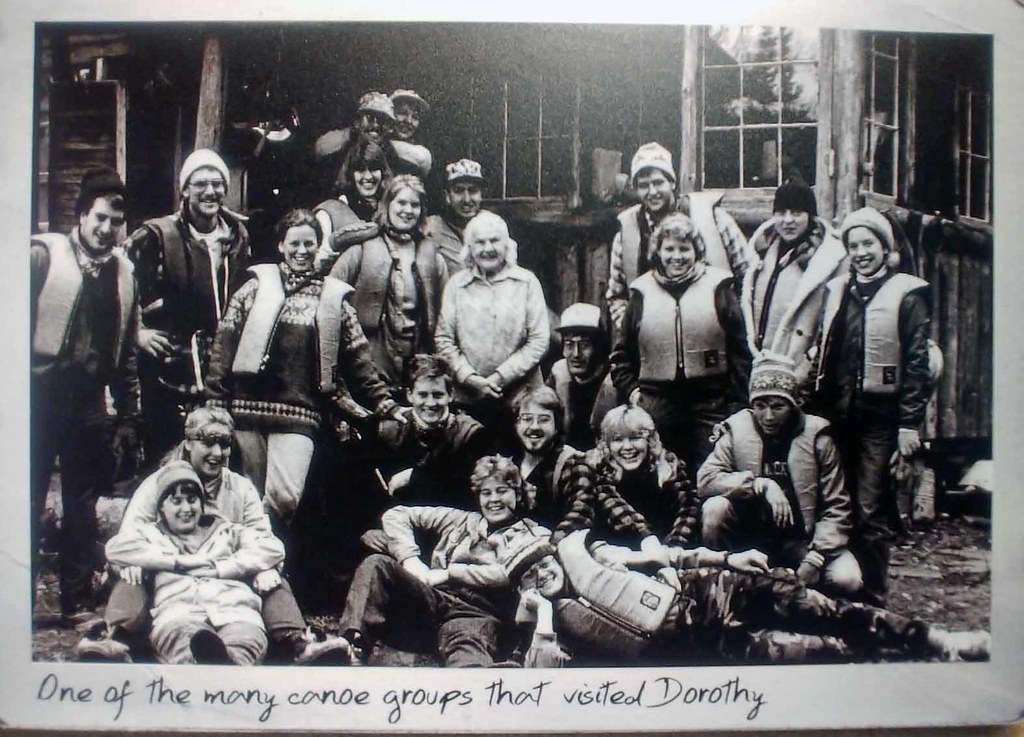




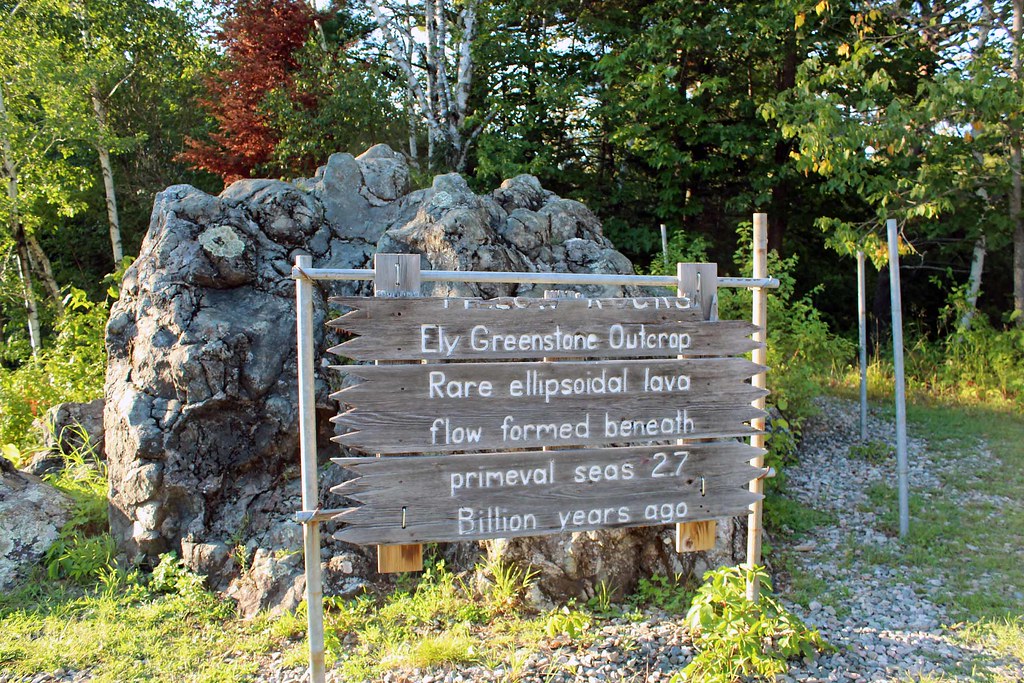

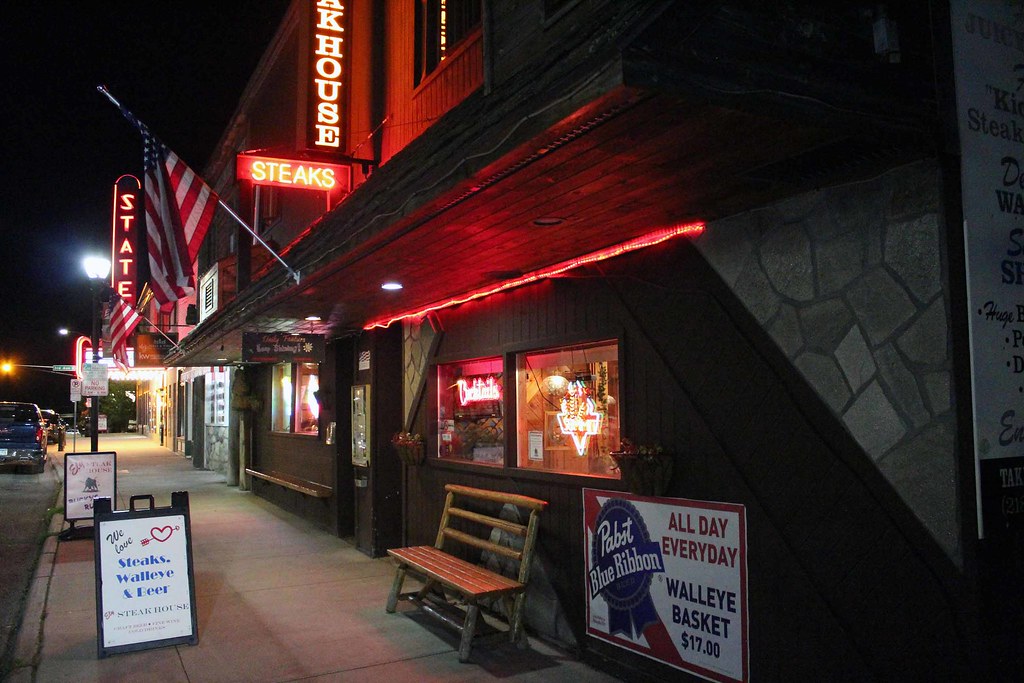




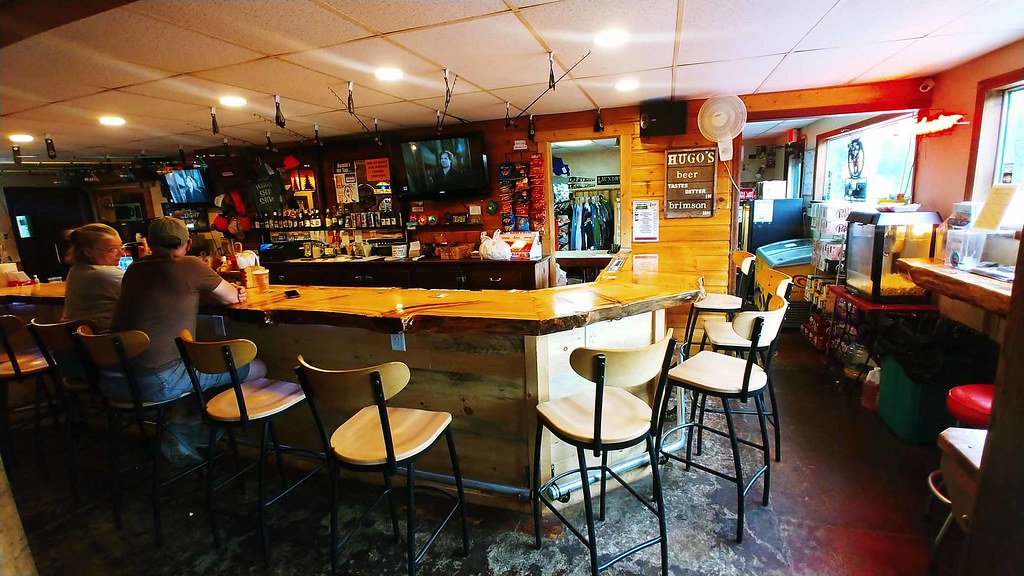




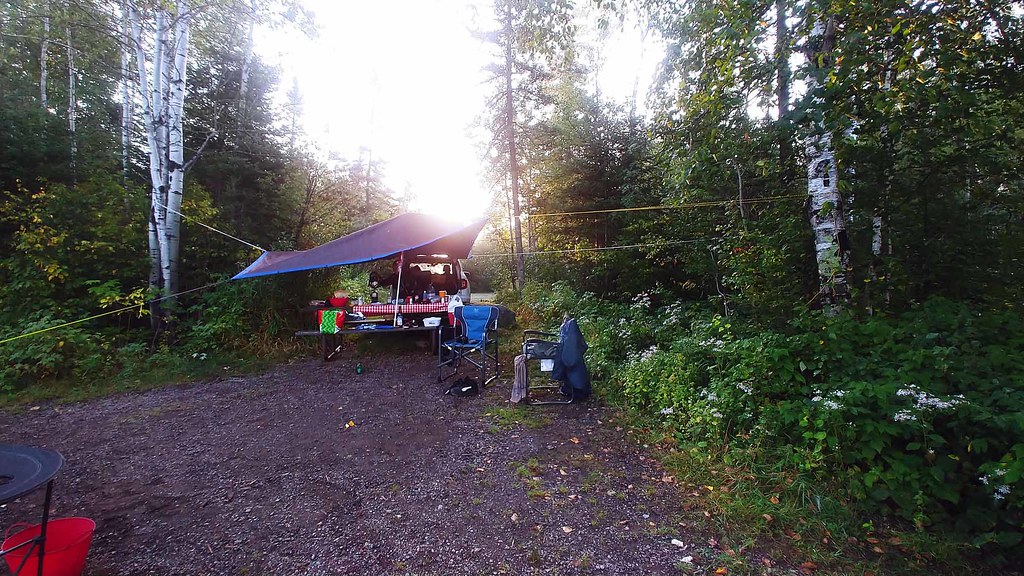





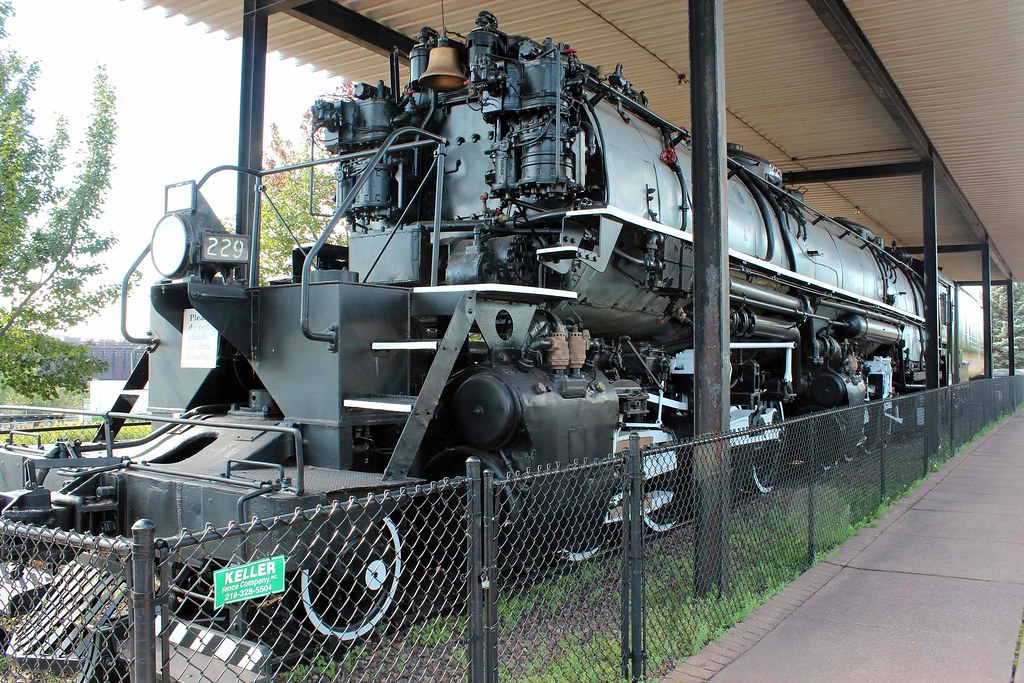

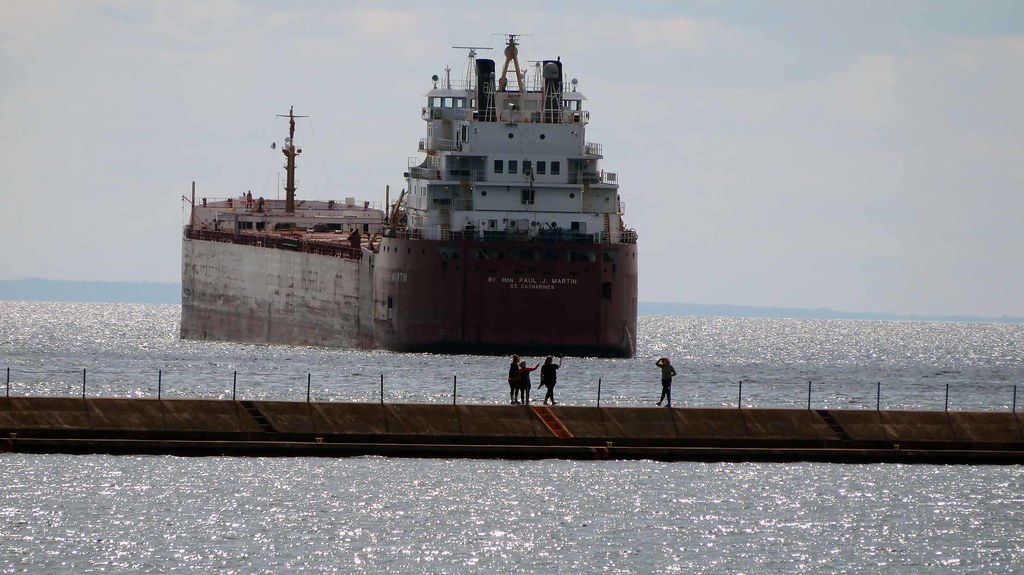




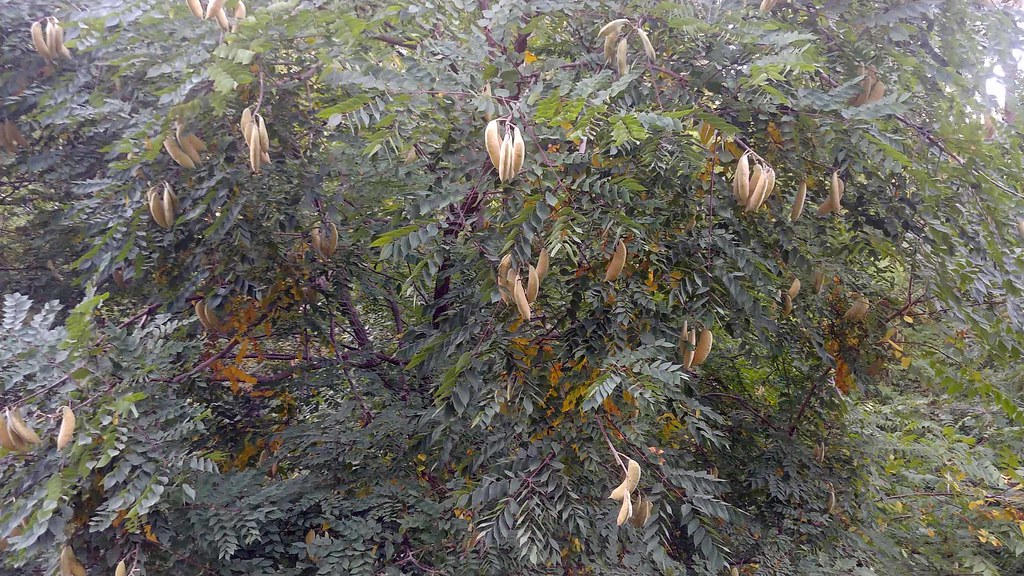






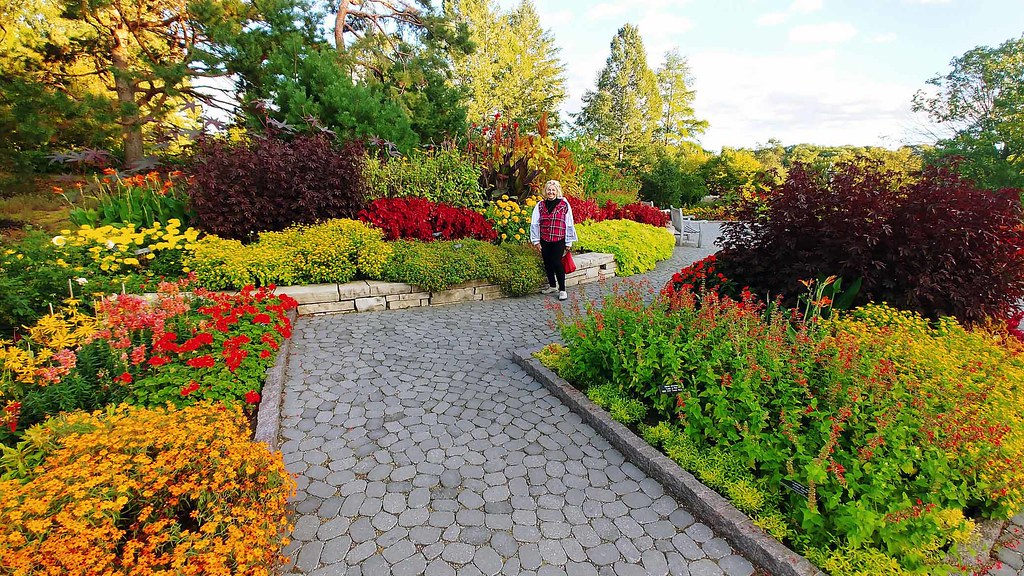









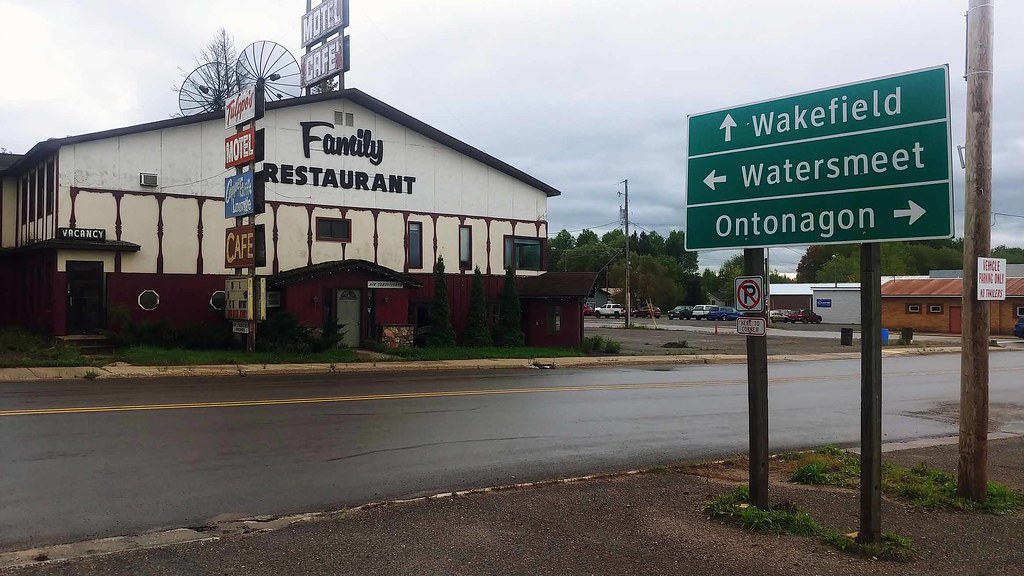




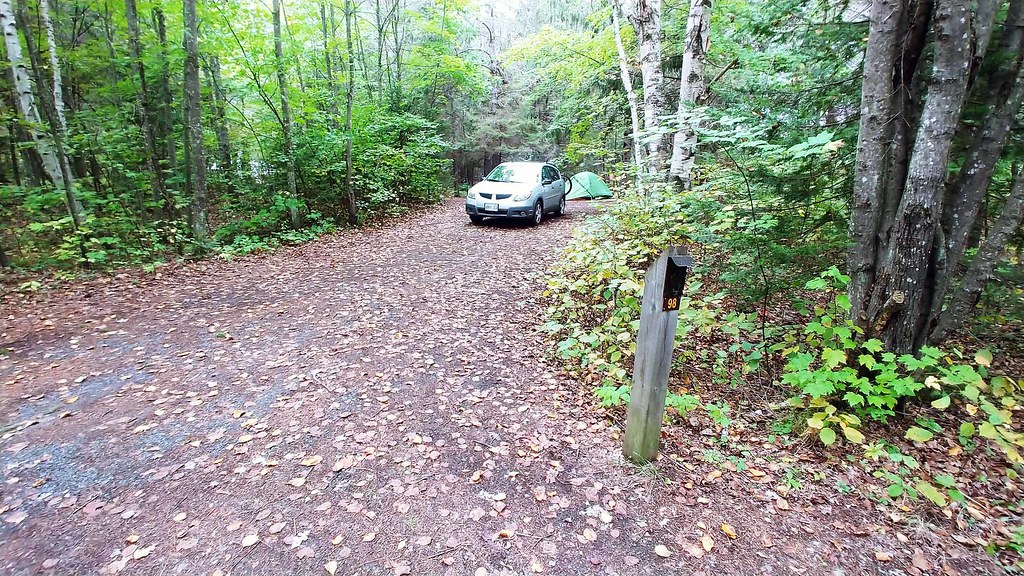



I read your blog a few times, it was an excellent trip! And the encounter with the rattlesnake must have been a highlight of the trip. I'm looking forward to reading more posts of your trips. Thanks for posting!!!
ReplyDeleteThanks for your comments. Rattlesnakes are not very common and I'm thrilled each time I encounter one! I hope to post blogs from my 2023 trips in a couple of months.
DeleteAutko na pierwszym zdjęciu wymiata Jacku, przynajmniej z wyglądu. Rewelacyjne. Dużo pięknych fotek widzę i ciekawych filmów. Ja także lubię sklep Aldi :) mamy tu taki niedaleko osiedla.
ReplyDeletePozdrawiam serdecznie i dziękuję za pamięć.
Dziękuję za komentarz!
ReplyDeleteW Kanadzie sklepów Aldi nie ma, ale chyba pamiętam je z Austrii. Fajne sklepy, nie mają dużego wyboru, ale to, co mają, jest tanie i dobre. Rok temu kupiliśmy wyśmienite żeberka z owcy, zrobiliśmy na grillu, po prostu niebo w gębie!
A samochód to rzeczywiście niezwykły, do tej pory nie wiem, jak czymś takim w ogóle można jeździć.
Your camping road trip through Northern Minnesota sounds like an amazing adventure! It’s great that you’re making the most of the outdoors and exploring beautiful places like Chutes Provincial Park and AuTrain Lake Campground. Your storytelling really brings the journey to life, from the quaint stops along the way to the reflections on your favorite reading spot by the water.
ReplyDeleteIt must have been interesting to see how the campsite had changed since your last visit, especially with the trees gone. The orange leaf with raindrops is such a nice touch; I love that you included it in your letter to Maria—it adds a personal connection to your experiences.
It’s also fun to hear about your interactions with fellow travelers and the little hiccups along the way, like the GPS confusion! Your love for nature and camping really shines through, and I can’t wait to read more about your experiences as you continue your journey. Safe travels, and may your adventures be filled with more beautiful views and memorable encounters!
Read my new blog post: https://www.melodyjacob.com/2024/10/cozy-up-for-christmas-my-favorite.html Wishing you a happy weekend.
19/10/2024
DeleteHello Melody,
Thanks for your comment!
I’ve done this trip (driving from the Toronto area to the Minneapolis area and back) about 5 times, including just last month (even the US immigration officer noticed that), and I have always enjoyed it very much, as I try to take different roads and stay at new campgrounds. There are plenty of forests and quaint towns that can be explored, as well as National Forests with many amazing & private campgrounds.
All the best,
Jack
Marvellous!
ReplyDeleteThanks!
DeleteBeautiful blog
ReplyDeleteThank you!
Delete